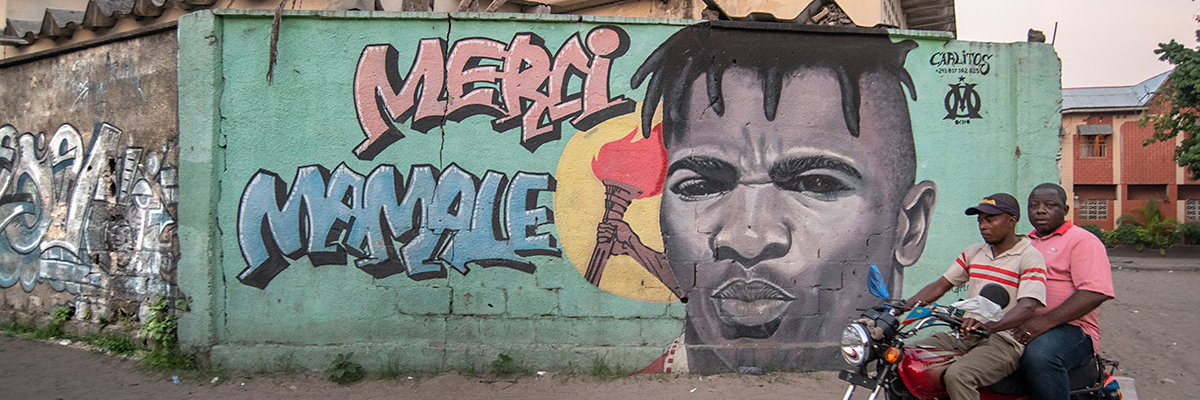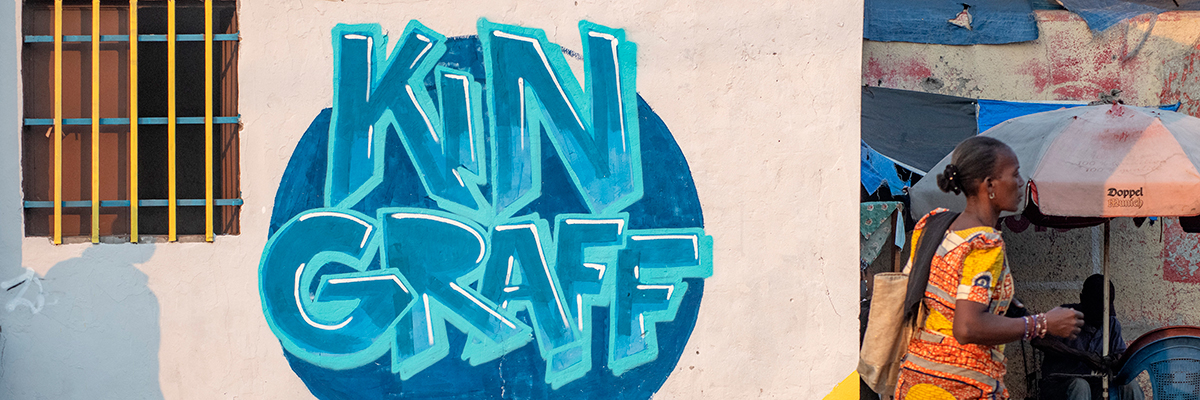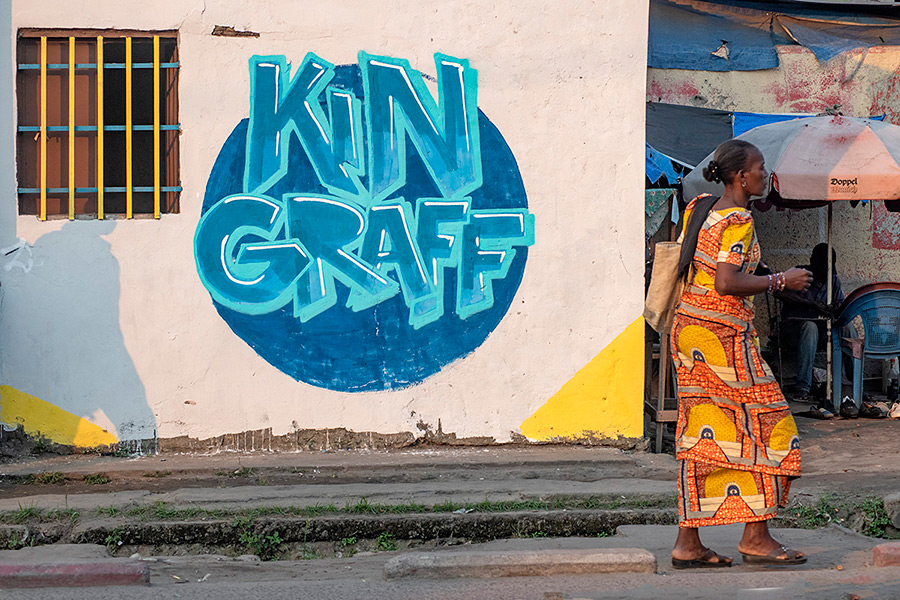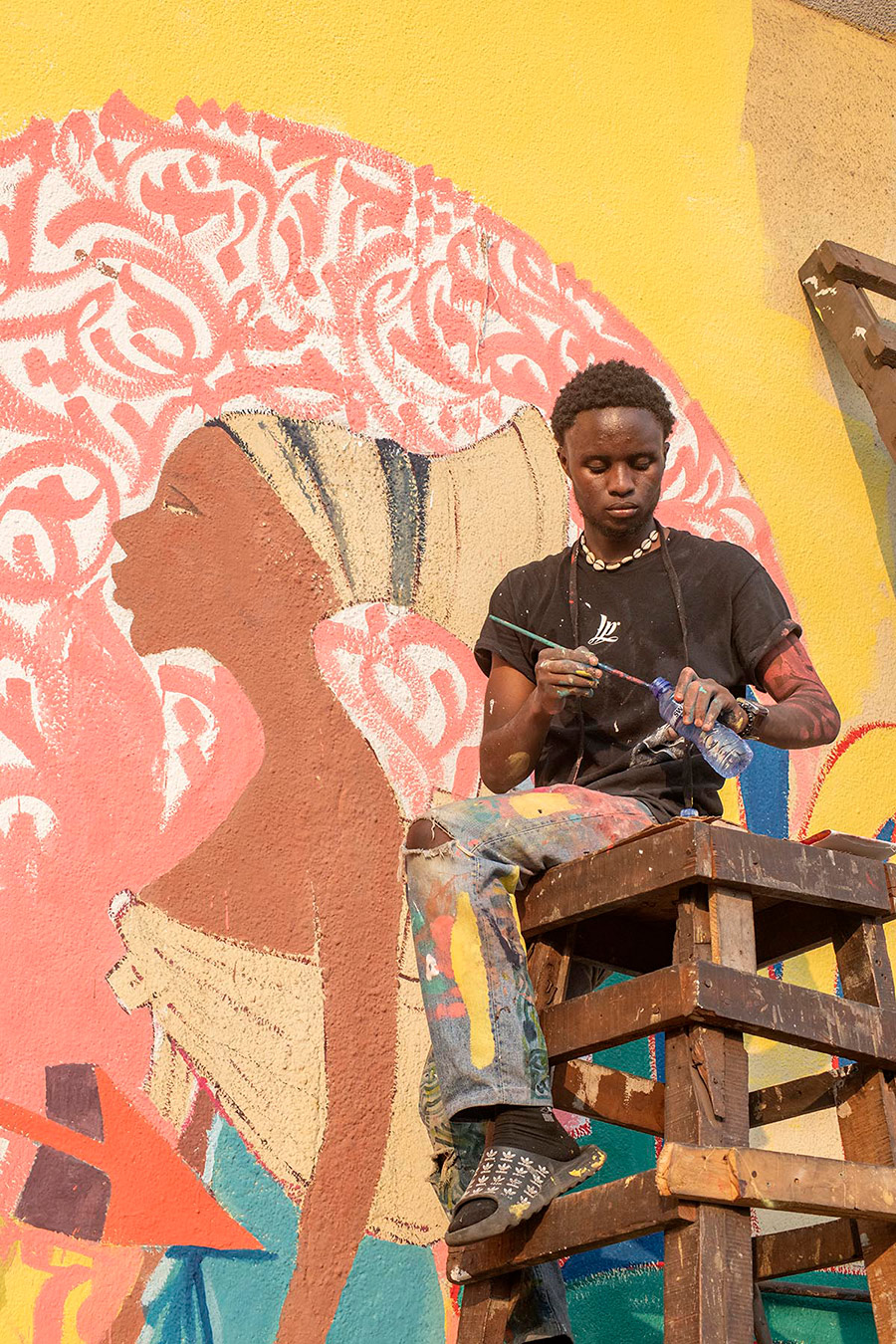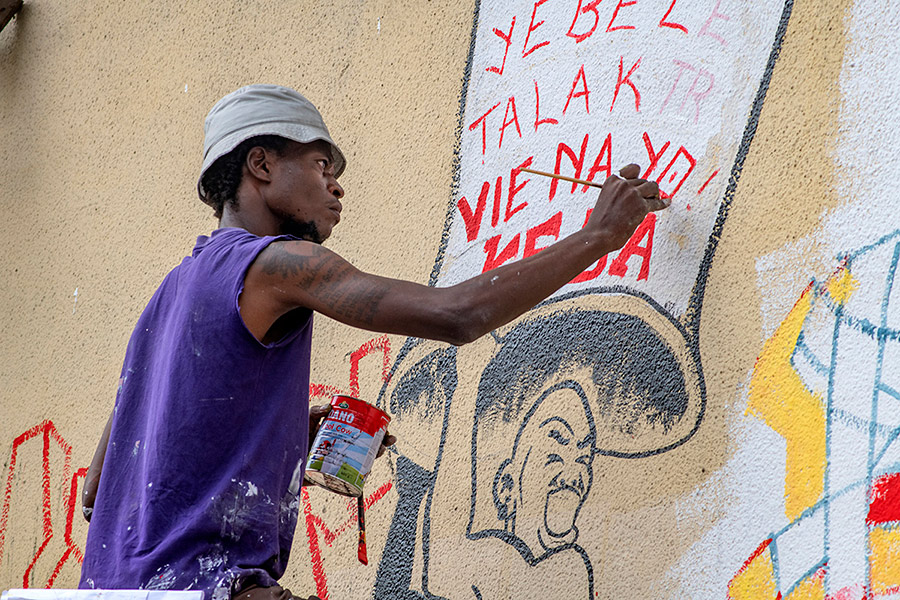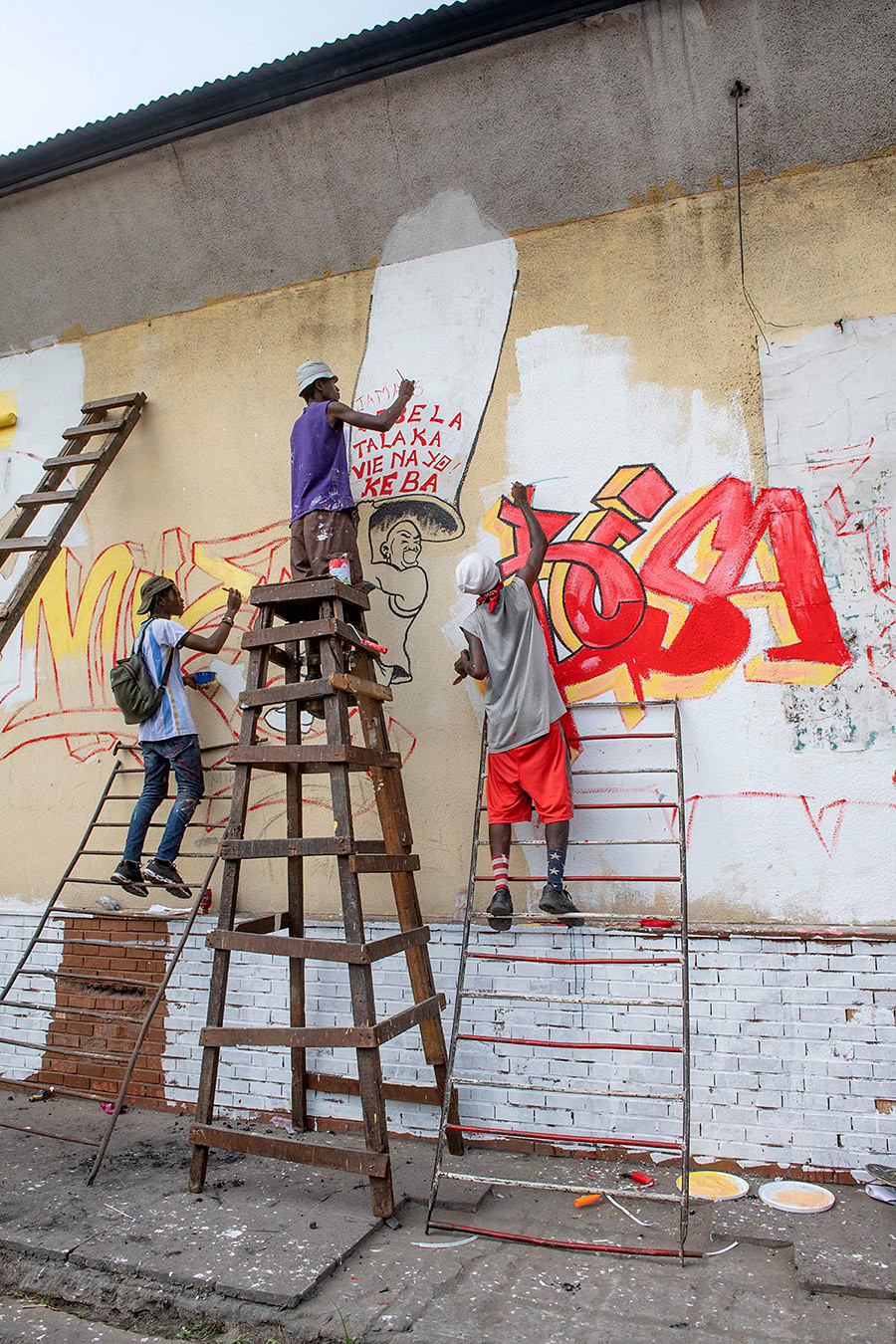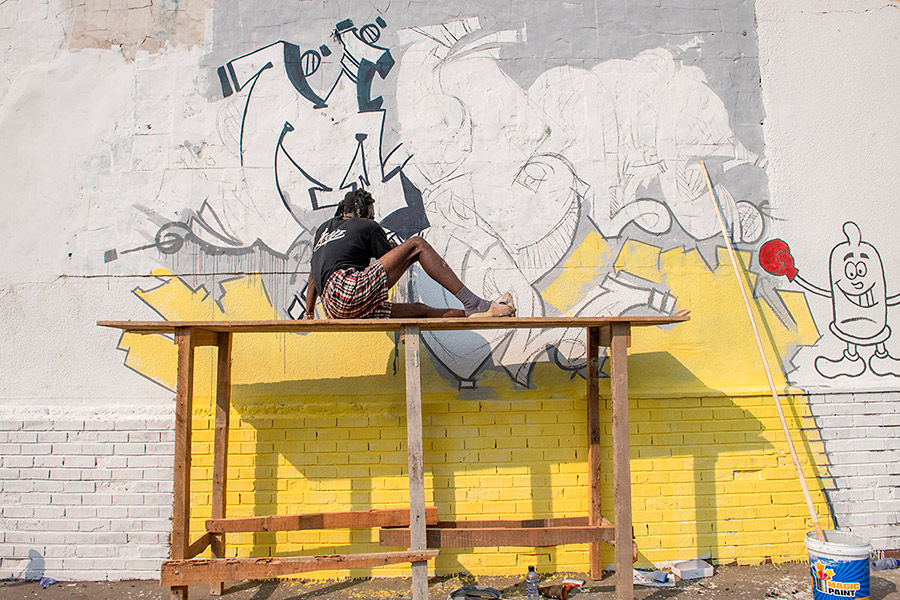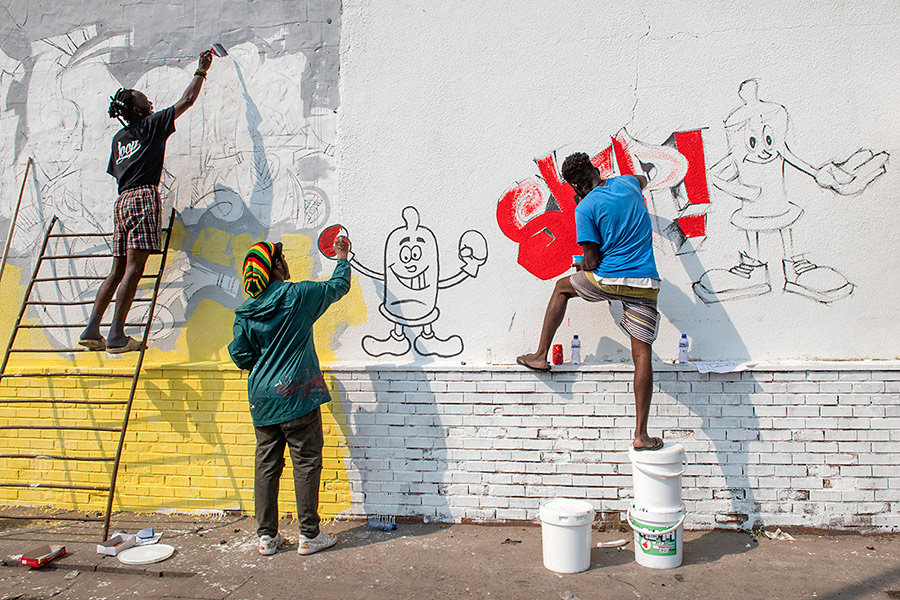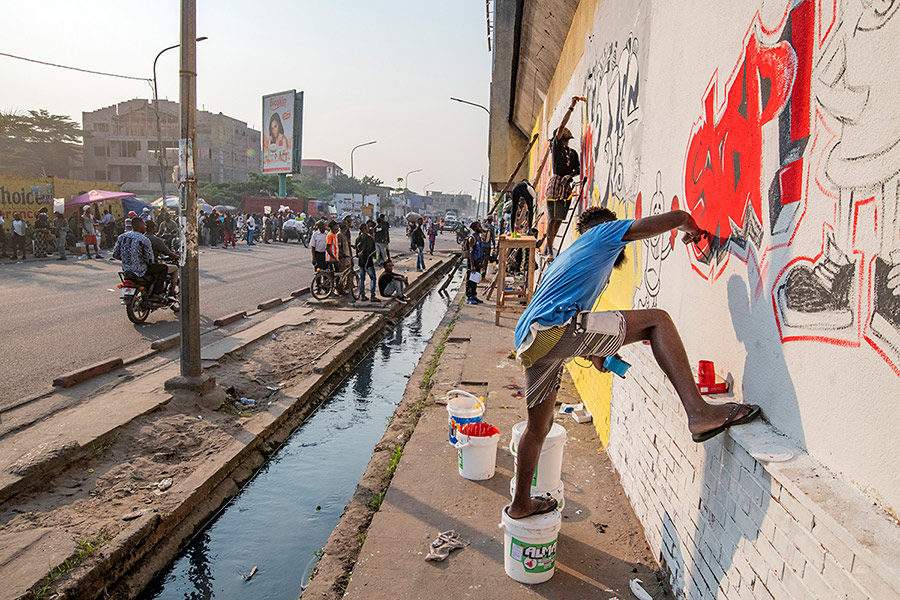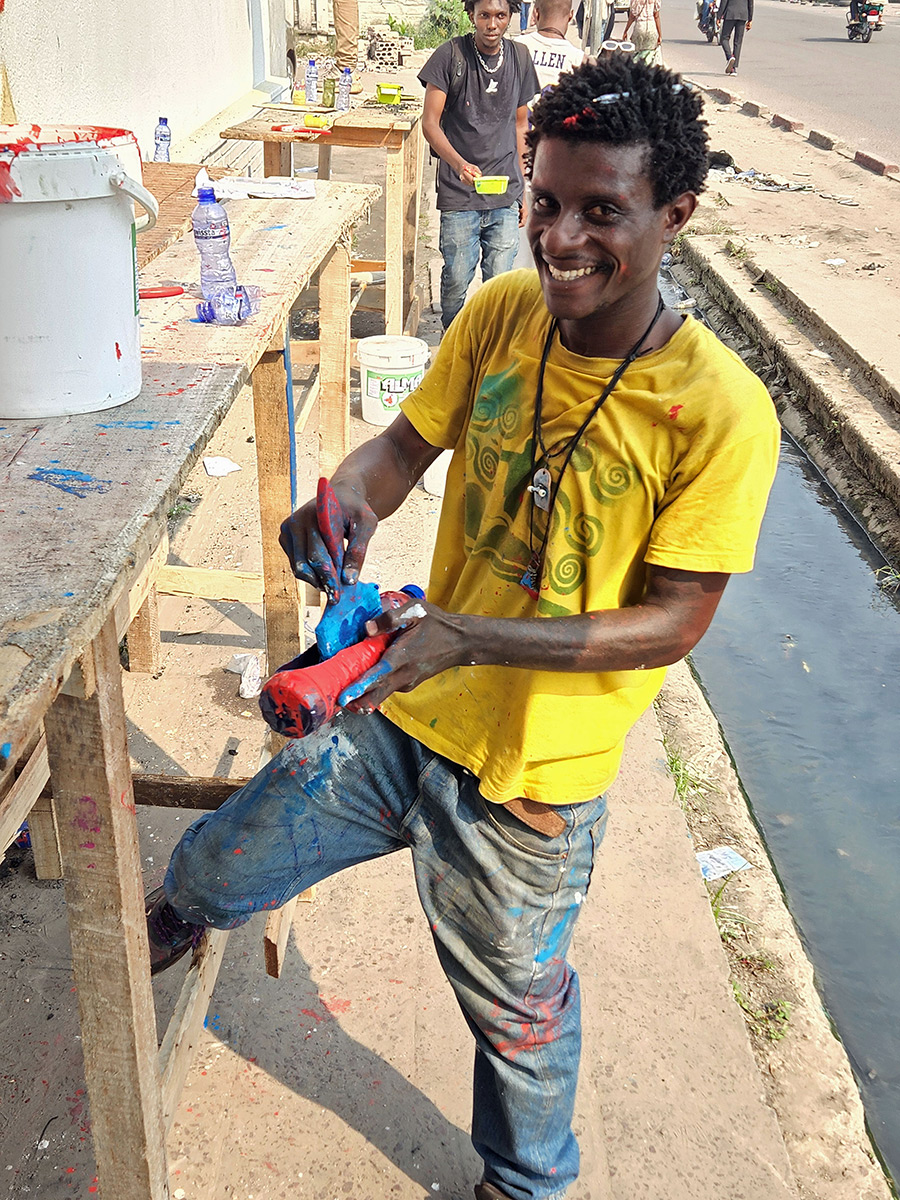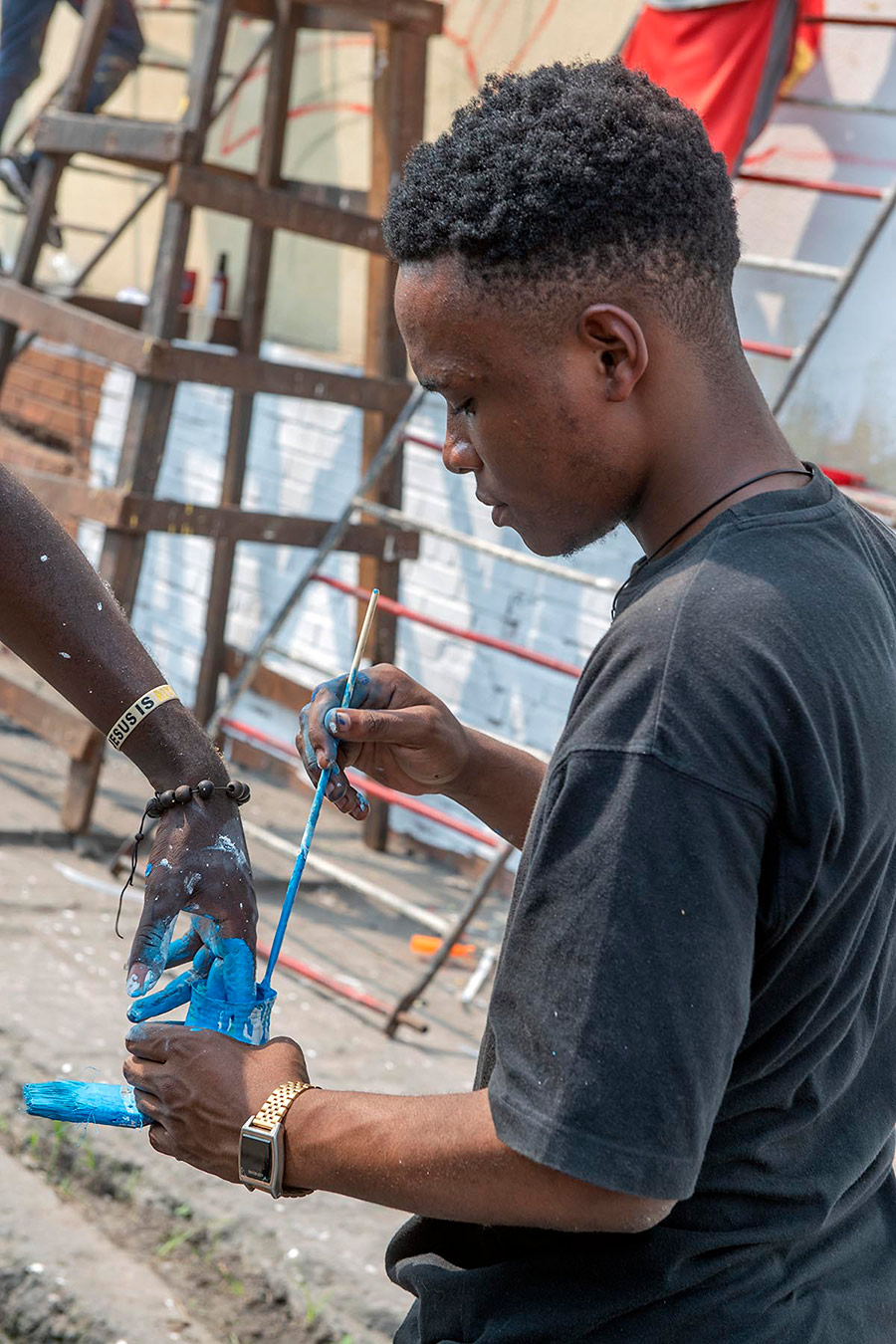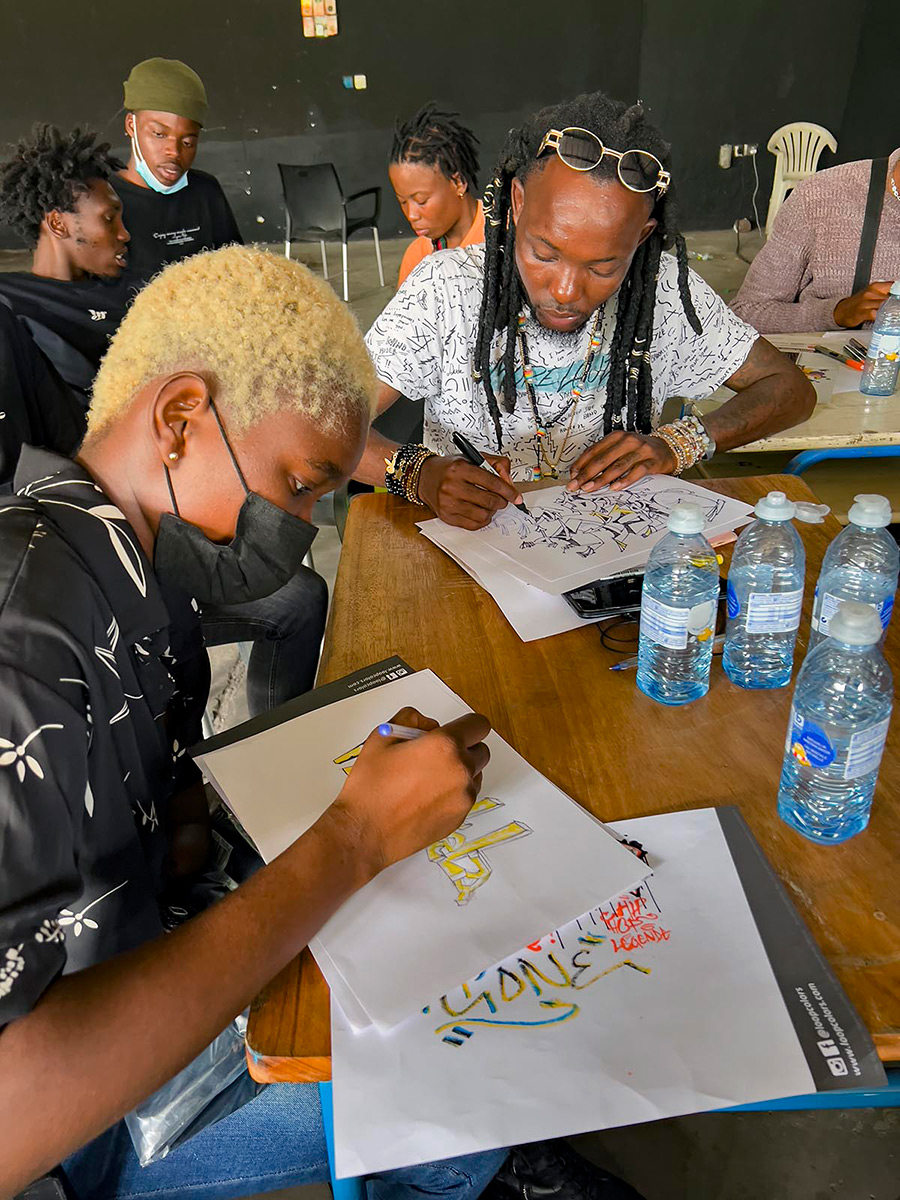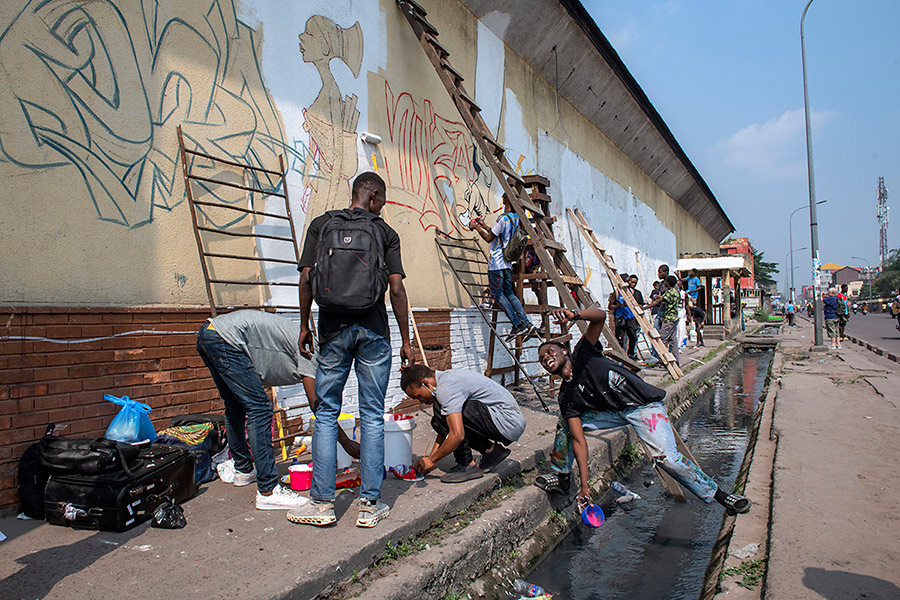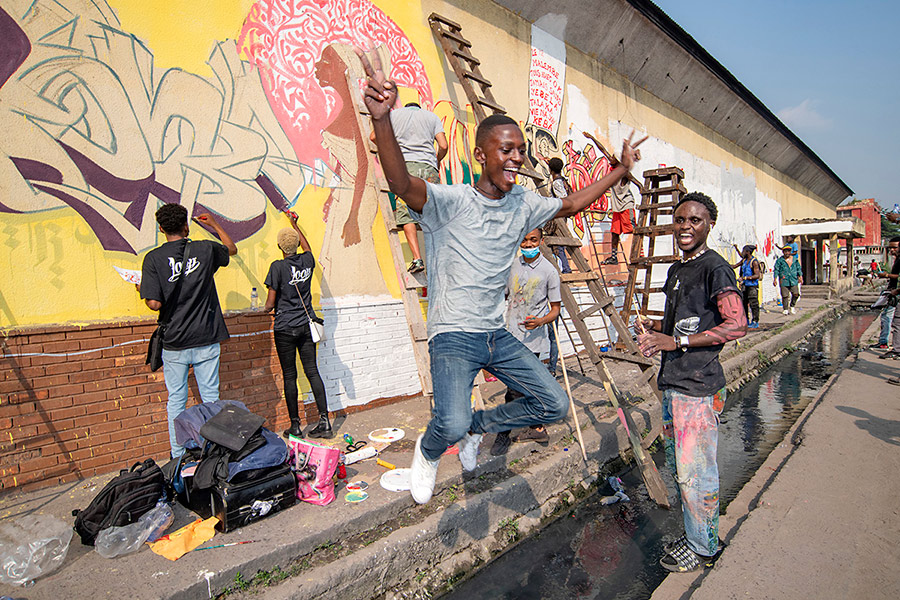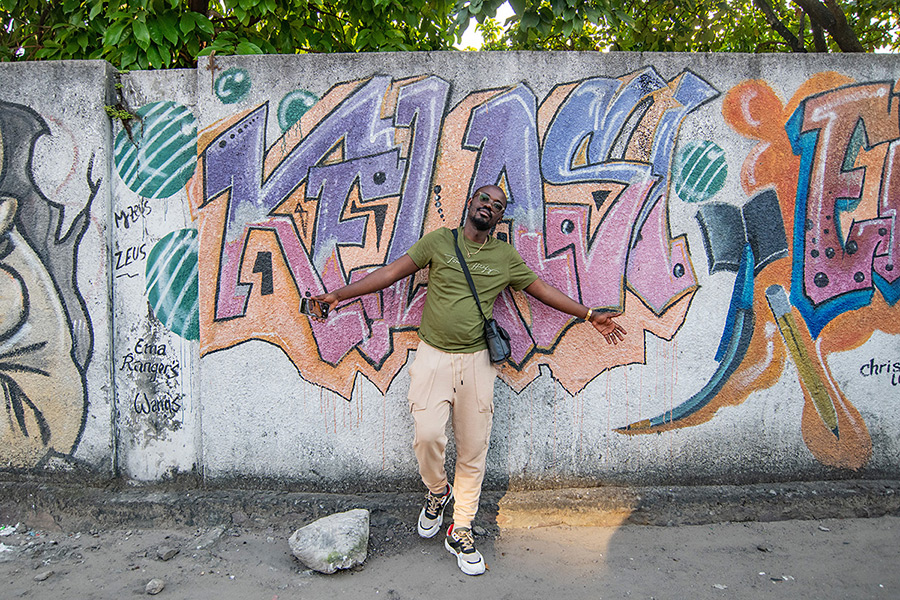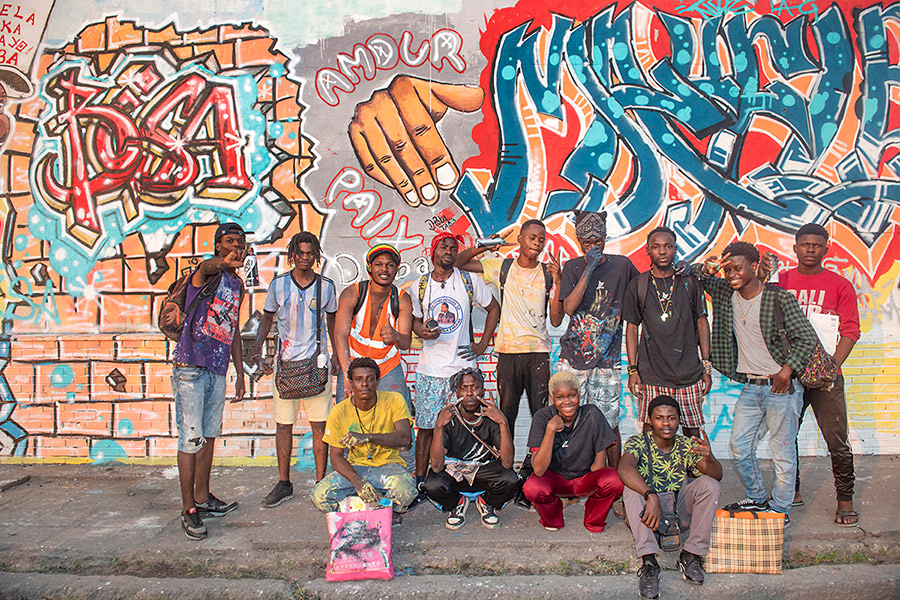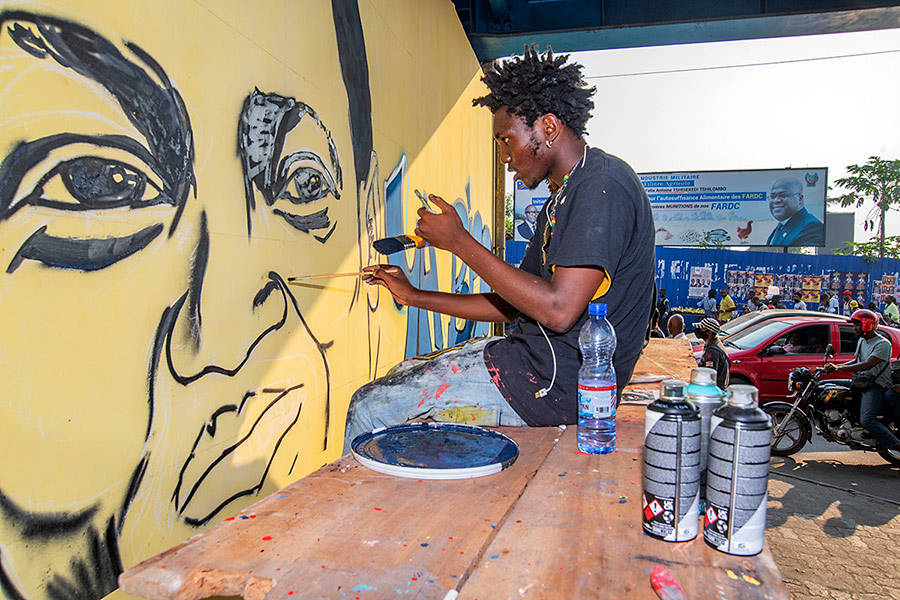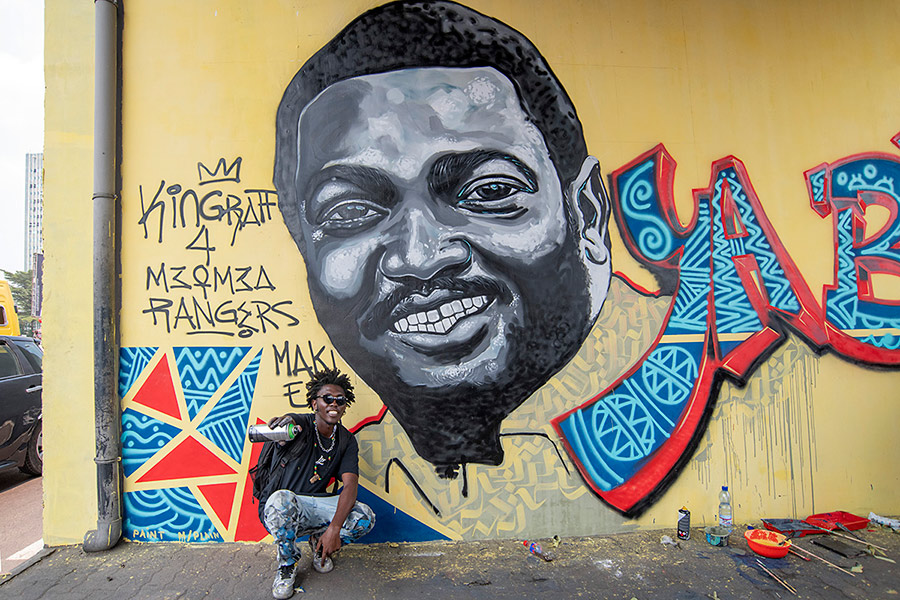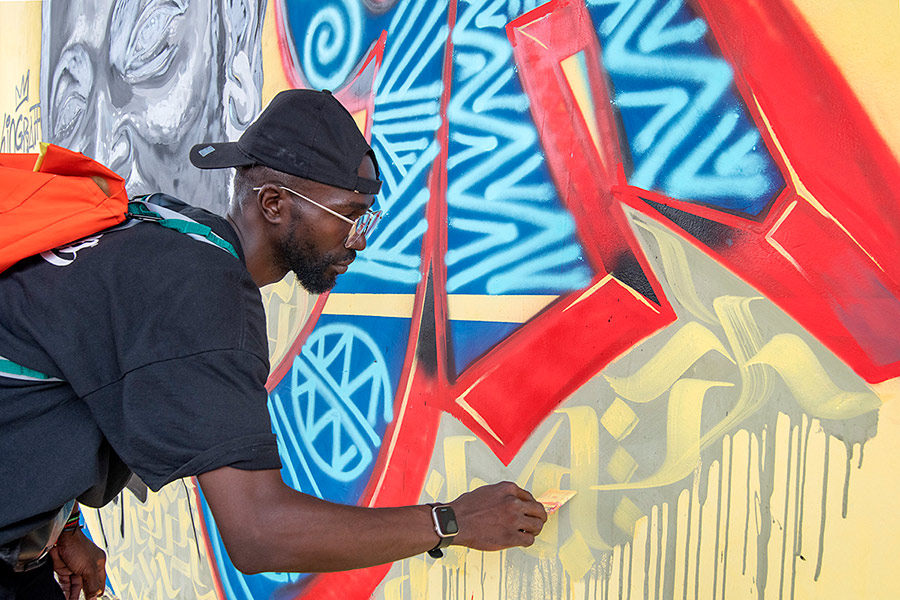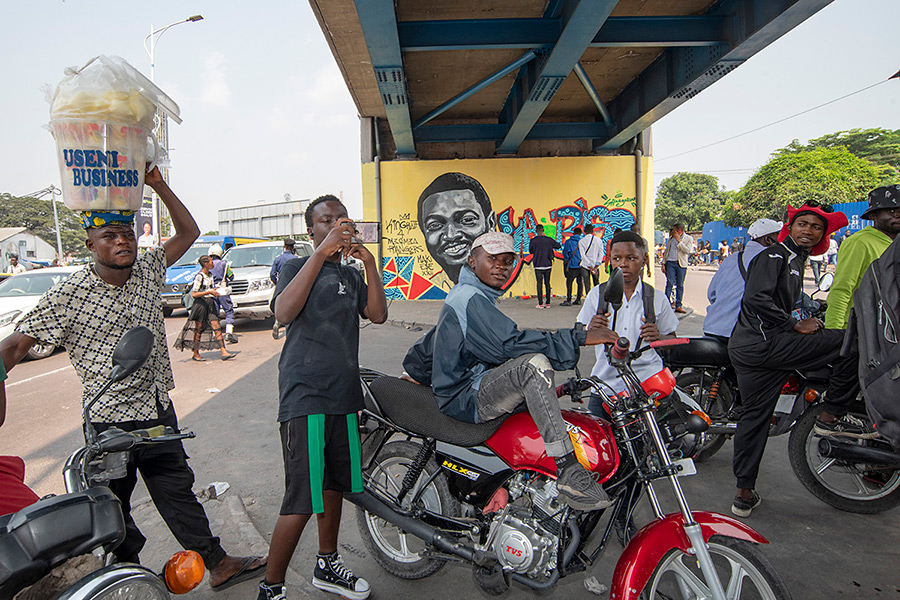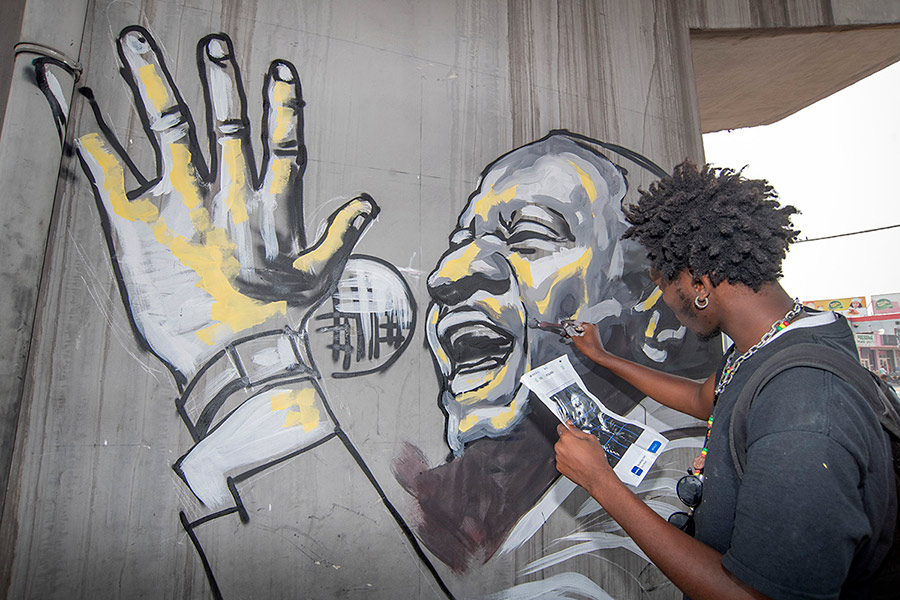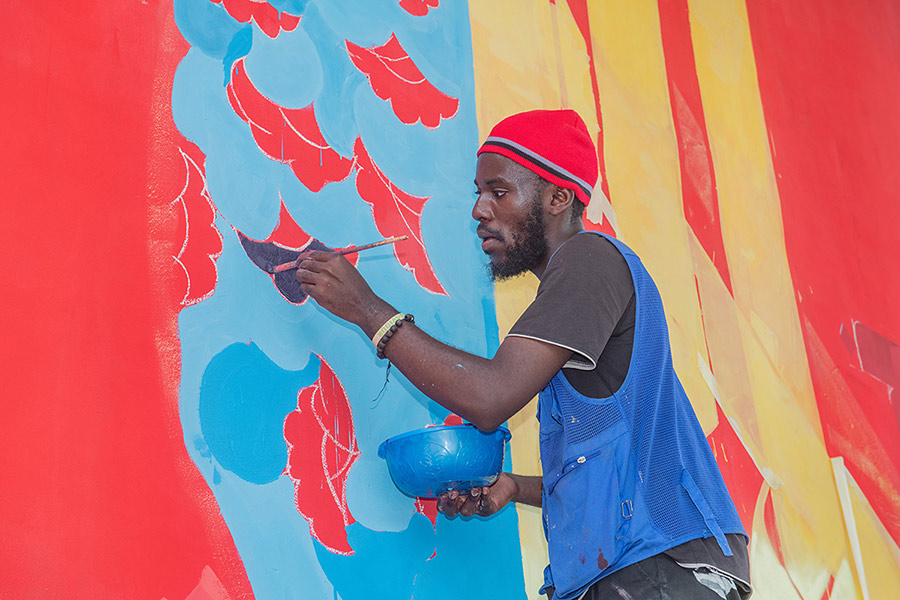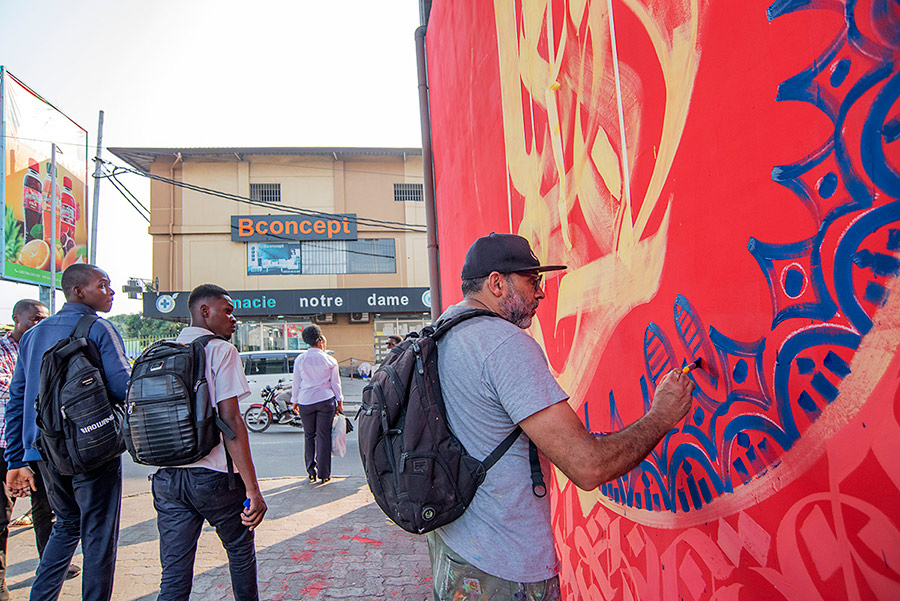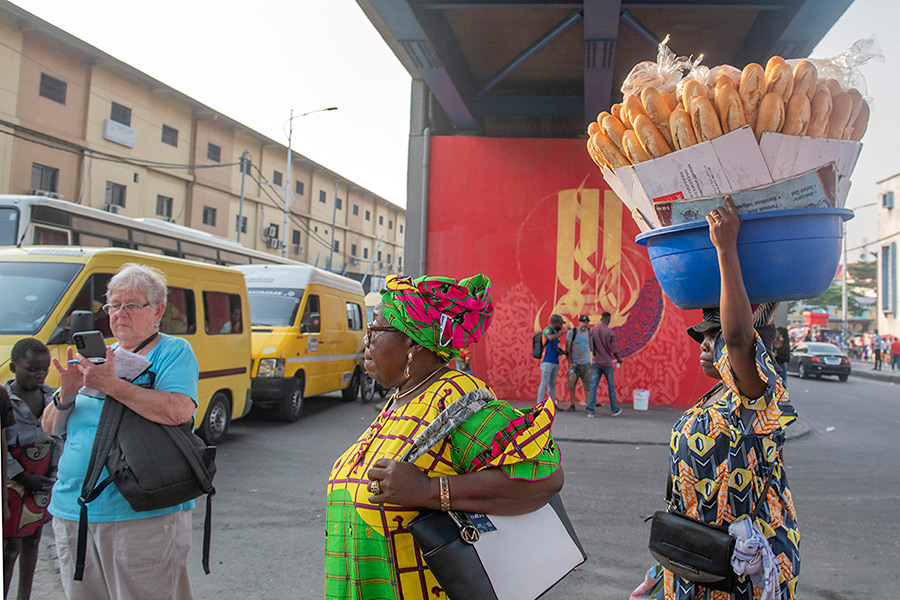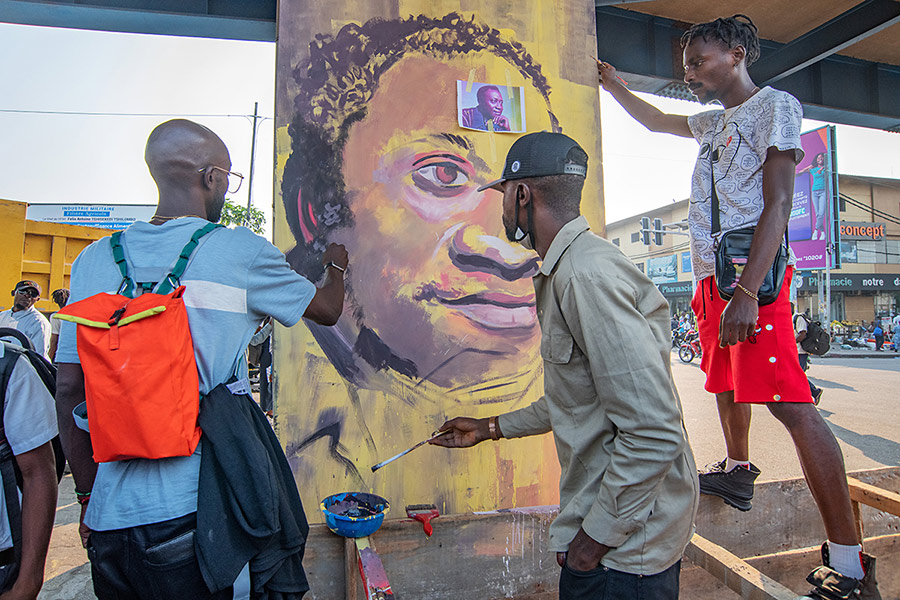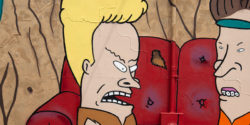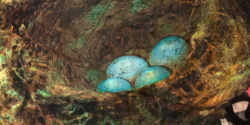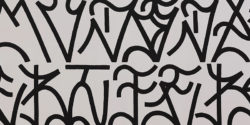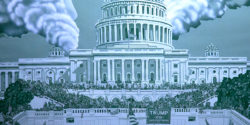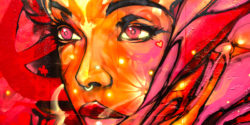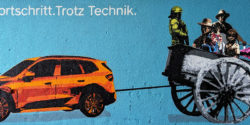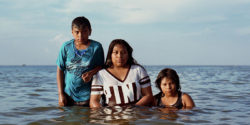Join the party today in Kinshasa in the Democratic Republic of the Congo, where the street art festival Kin Graff 4 brought many to celebrate the murals, the artists, and the festival itself with music, food, and dancing.
Today we see images of the artists and celebrants here in the municipality of Kinshasa called Bandal, which is short for Bandalungwa. It’s the hometown of many of this year’s artists and the site of many works from last year’s edition of Kin Graff. The musical event was called “Live Experience,” and photographer Martha Cooper tells us that there were “performers appearing on an outdoor stage which had been set up for the night.”
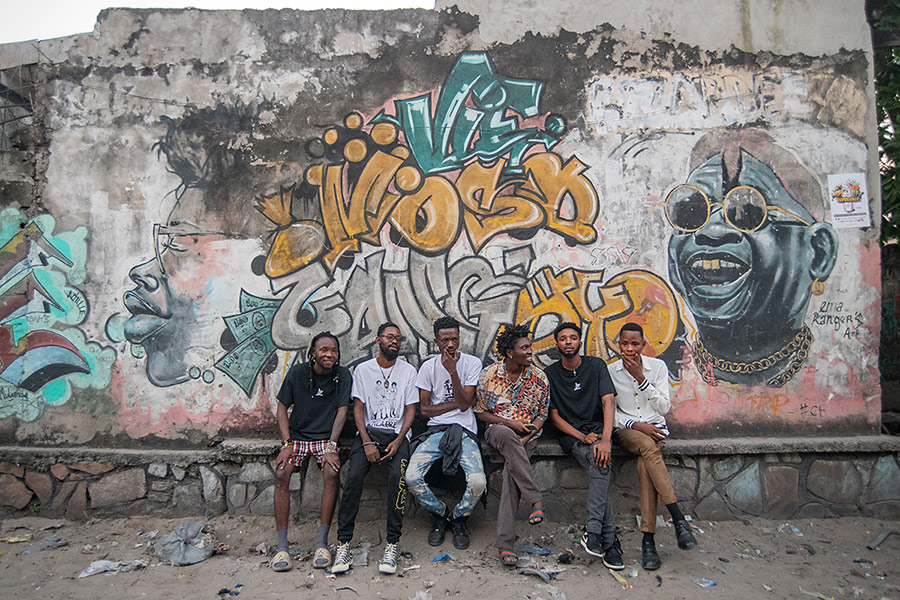
It’s great to see so many people celebrating the arts and the positive role that they bring to a community. “White wooden boxes were placed near the stage for graffiti writers to paint live,” Martha tells us. “Many of the musicians were rappers. We heard that there were going to be BBoys dancing, but we didn’t stay late and don’t know whether that happened. There was an enthusiastic reception from the crowd who cheered and danced to the performers.”
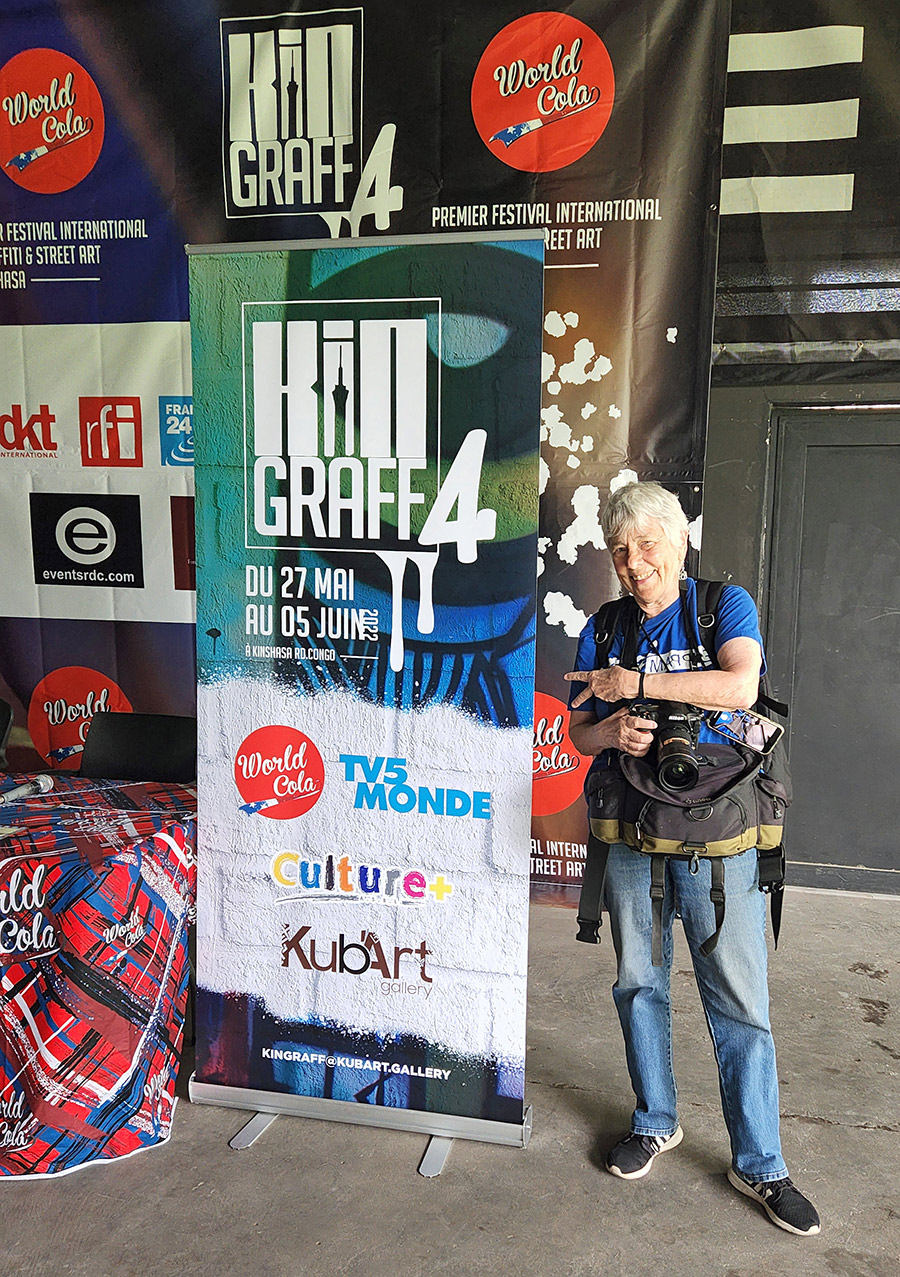
Also, we show you some celebrants in fancy dress and creative costumery, some of the older murals, some of the new AIDS-themed artworks, and learn a little about Bonobos – which are found only here and are a celebrated part of the culture. We also speak here with Kin Graff director Yann Kwete, who tells us how he became interested in such a challenging project, and how difficult it is to mount such an event here. We ask him what his aspirations are for the festival and the people concerning graffiti, muralism, and the spirit of creativity that runs through the streets in Kinshasa.
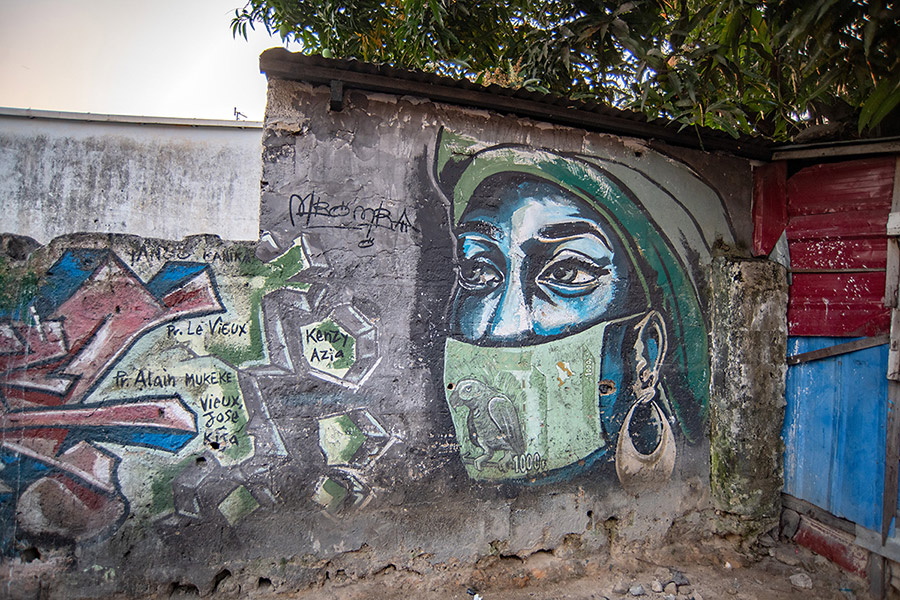
Brooklyn Street Art: How did you come out with the idea of organizing Kin Graff in Congo and how many editions have you organized so far?
Yann Kwete: My passion is art and urban culture. In 2013 I met Sitou, a graffiti artist from Togo and we had the idea to create this graffiti festival in DR Congo 2013. This was the 1st edition. From there I continued the project by myself through my organization Culture Plus. I have done 4 editions so far including this one.
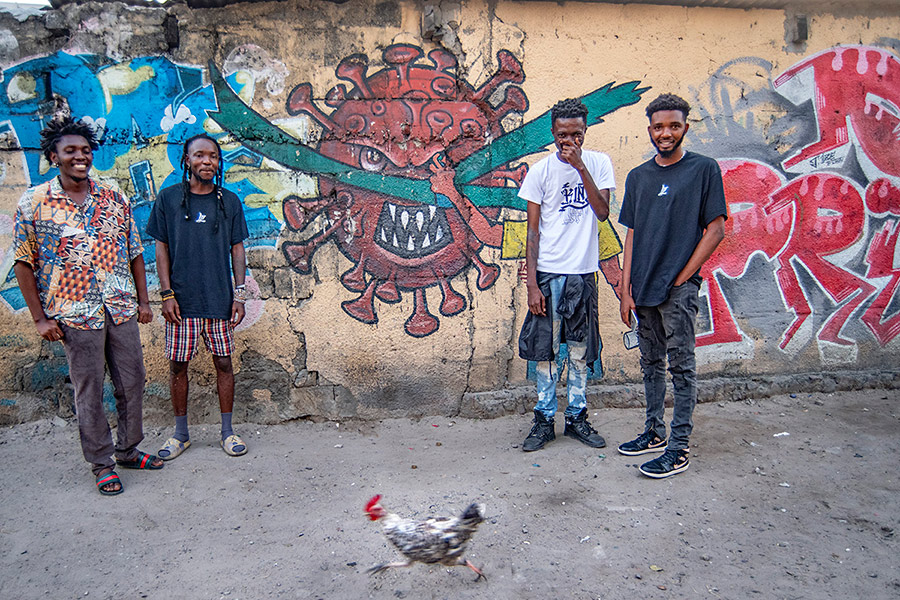
BSA: How did you get to know the artists’ work and how did you find them to extend an invitation to participate?
YK: I traveled through Europe and Africa and went to an art fair and other graffiti festivals. That’s where I met some of the artists. Some were referred by the artists I knew, and some contacted me directly to participate in the festival.
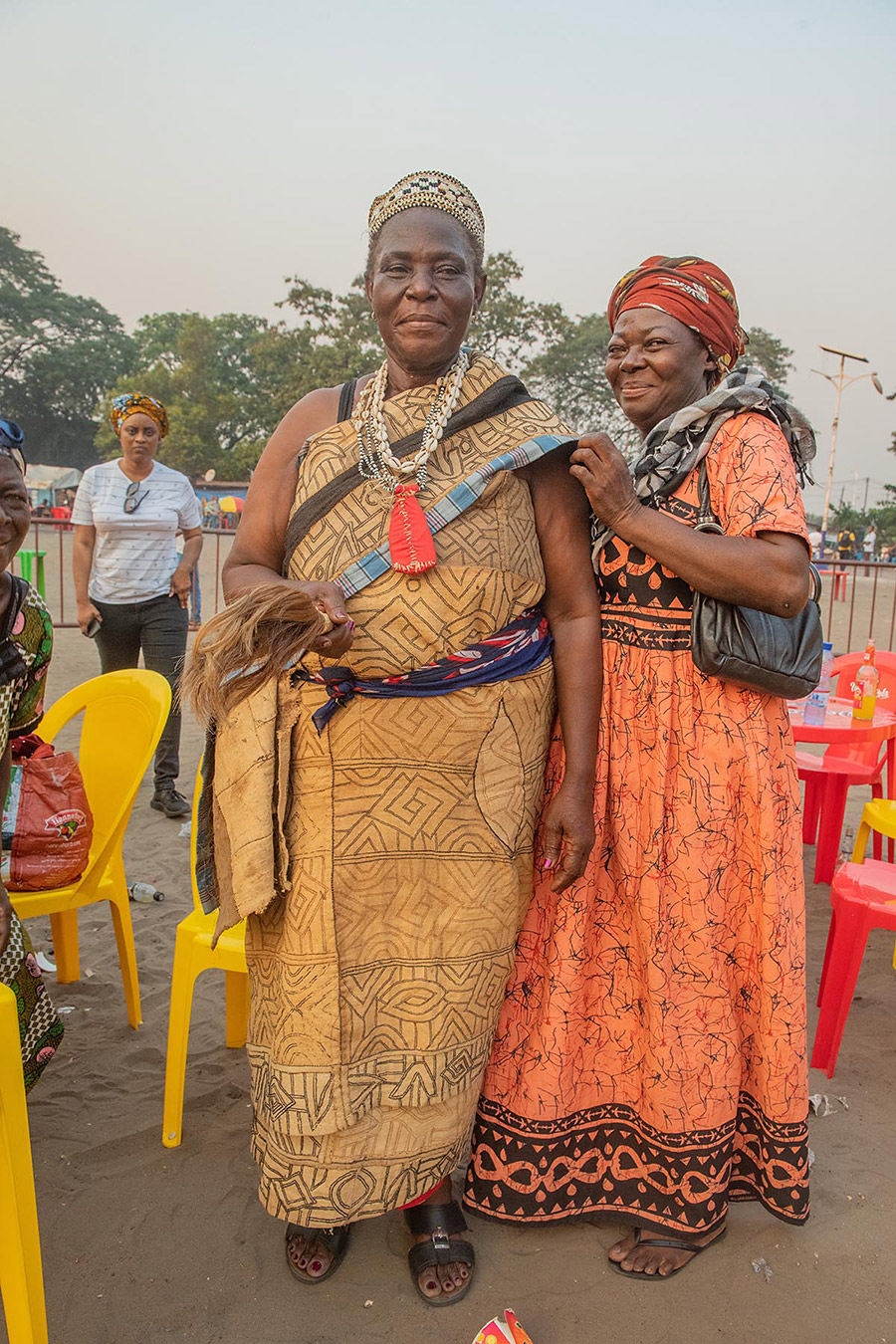
BSA: What are the biggest obstacles you need to conquer to organize the festival?
YK: The main obstacle, or challenge, I would say, is the financial aspect – as the government doesn’t really grant funds for the culture and arts in DR. Congo. We need to be concerned with everything – from the traveling of the artists to the food, hotel, and visa application as well. One of the challenges encountered was also sponsorship and administration. This is completely different from the Occident or Canada and the US.
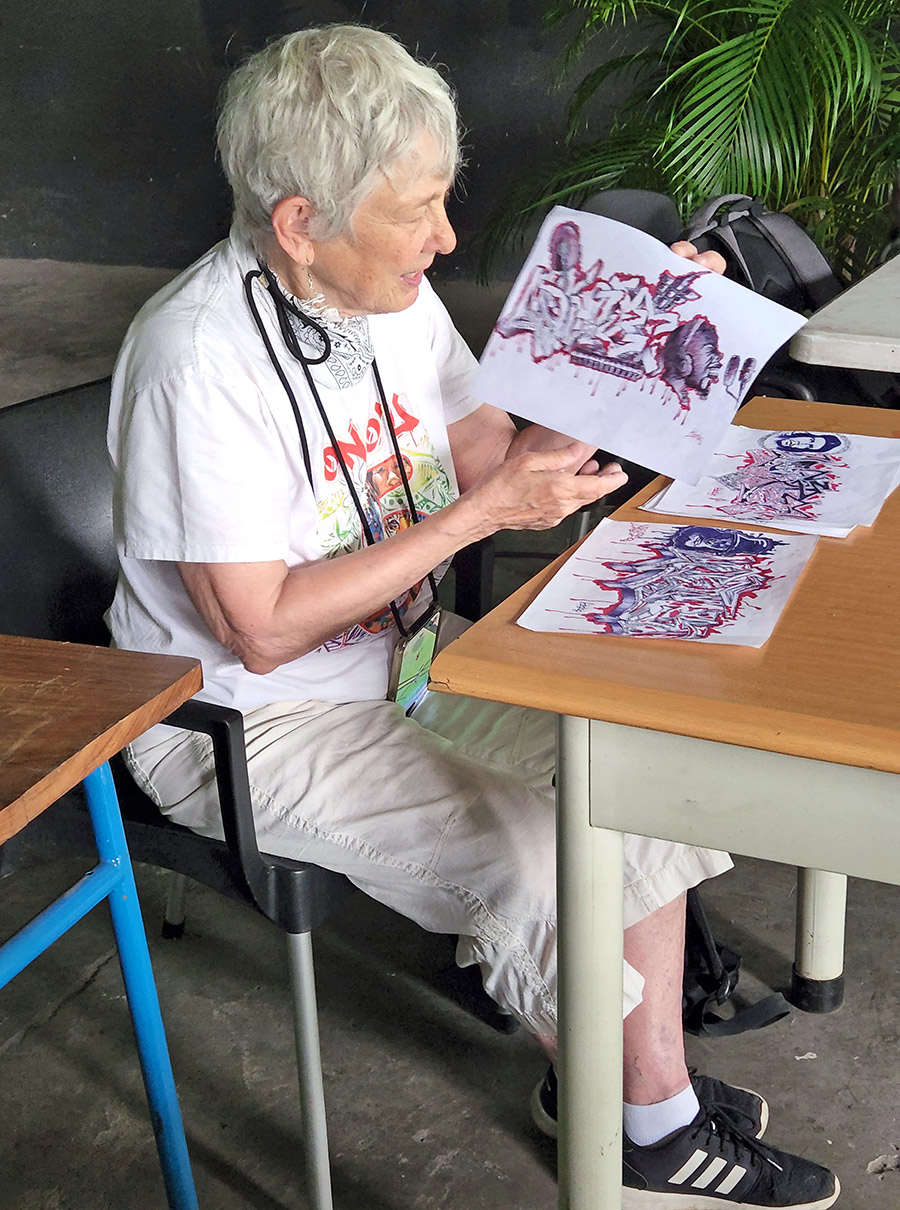
BSA: Do you get support from the city? Logistical? Financial? If so does it comes from private business or from the government?
YK: This was the 2nd time I got the support of the city. That support is administrative, not financial – to be able to have access to murals throughout the city. Most of the financial support we receive comes from private businesses. This year we had the chance to get a big sponsor, Bracongo, who was able to support us financially. Logistically, we had support from Loop Colors who was able to provide materials for the artists. We got also received support from media through TV5, RFI, and France 24 for the marketing.
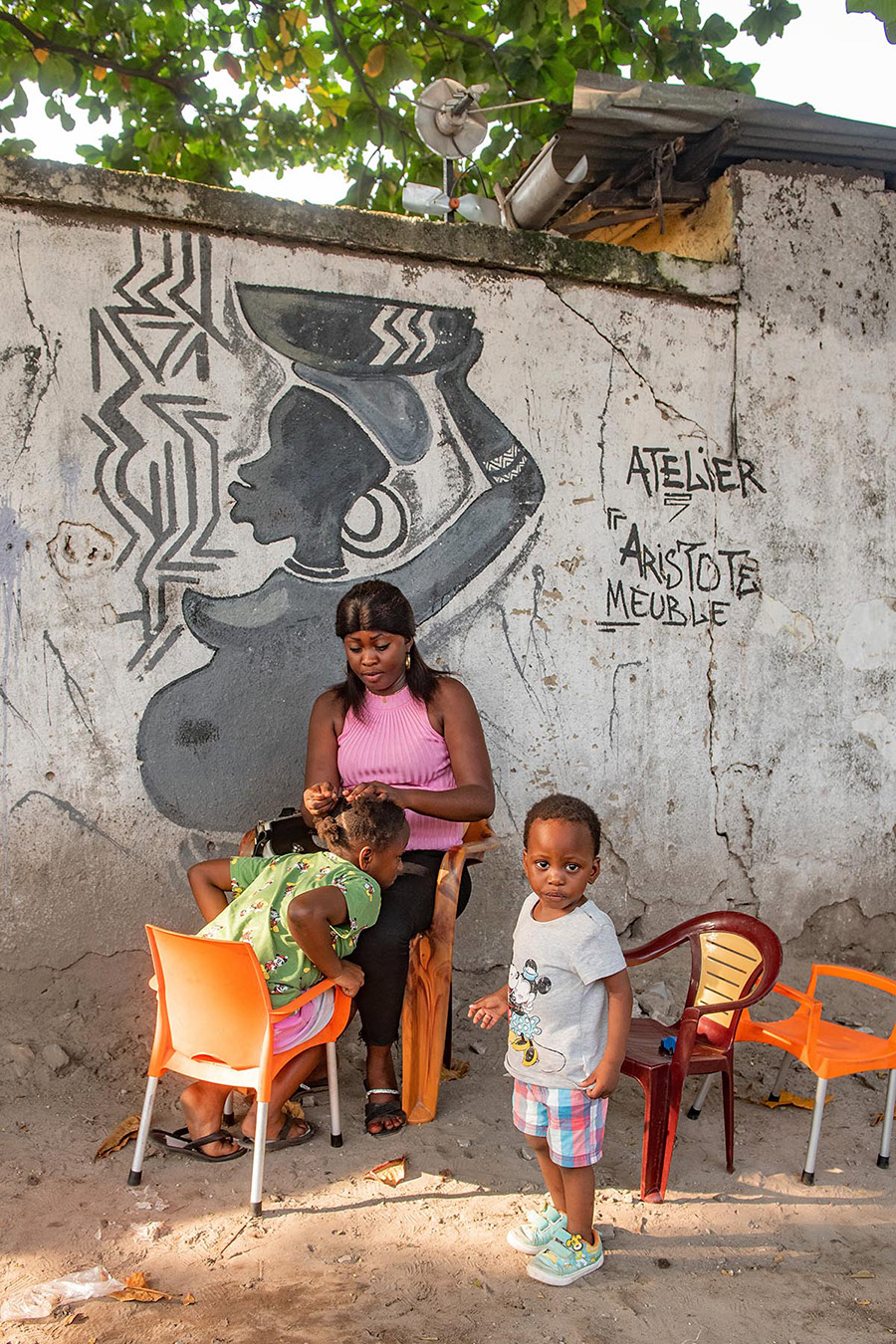
BSA: Are you a graffiti writer yourself?
YK: I’m not a graffiti writer but I studied at the Academy of Fine Arts here and have been an art lover ever since.
BSA: What are the aspirations of the graffiti writers when they come to the festival?
YK: It is based on their creativity, the theme of the festival, and their engagement through it.
BSA: Do you invite writers from many different cities and/or parts of the country?
YK: Mostly, I get local graffiti artists from Kinshasa and others are international. In the future, I will be able to have other artists coming from other cities to be part of the festival.
BSA: What’s the biggest satisfaction you get from organizing this festival?
YK: To show the world the beauty of arts and graffiti in our country, to develop the arts and culture in DR Congo. To teach and help young Congolese to become cultural administrators in DR Congo through their arts. My main goal is to promote art in DR. Congo and Africa.
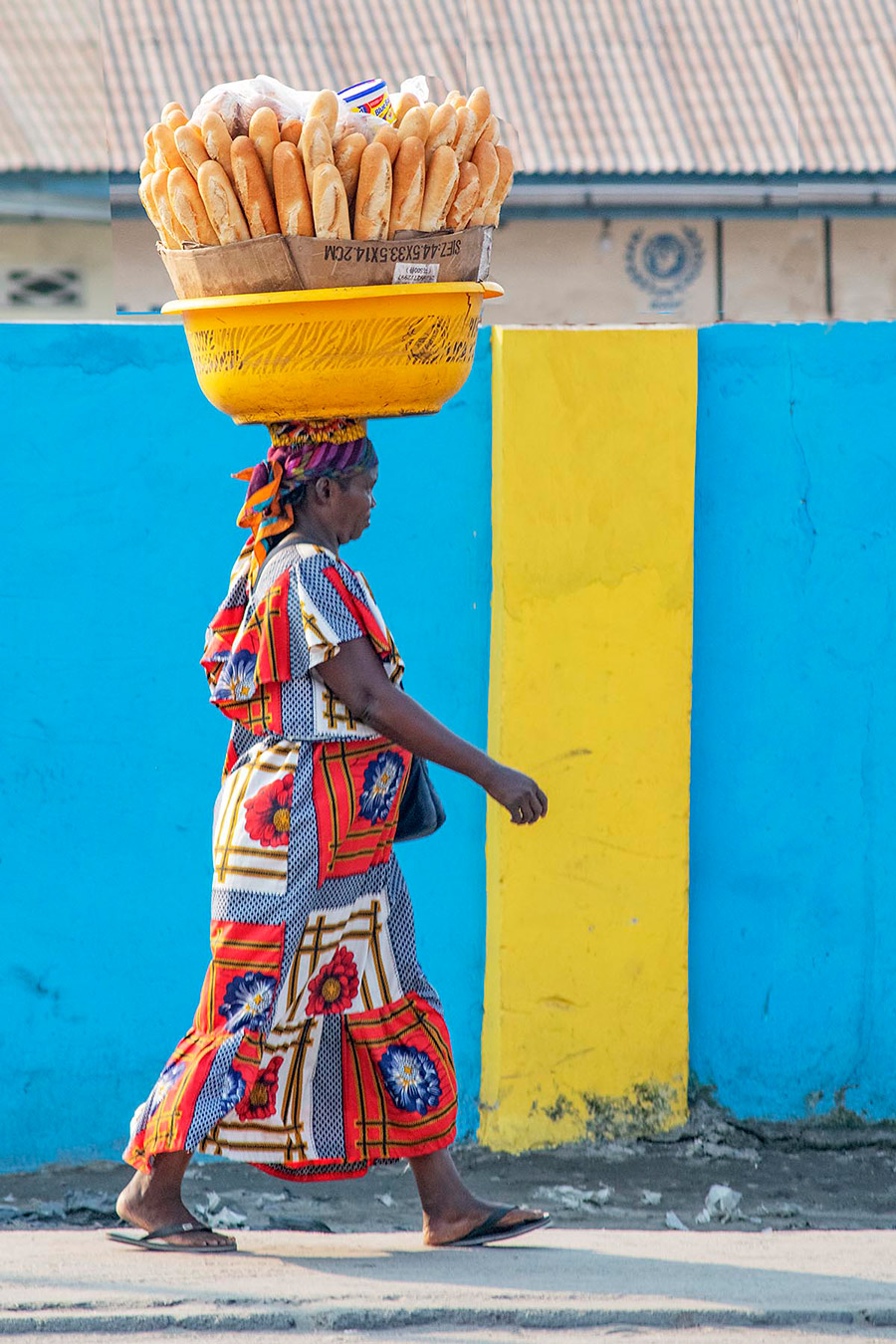
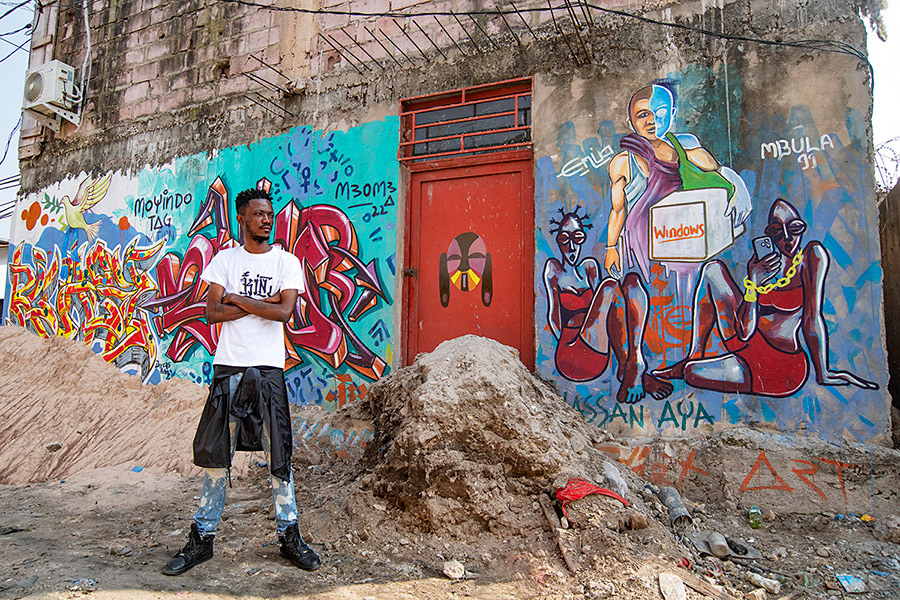
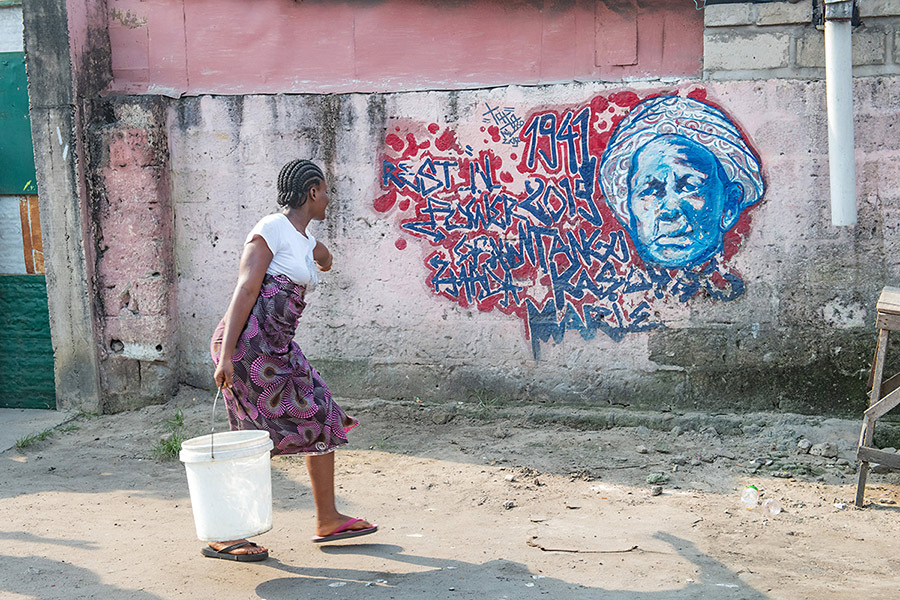
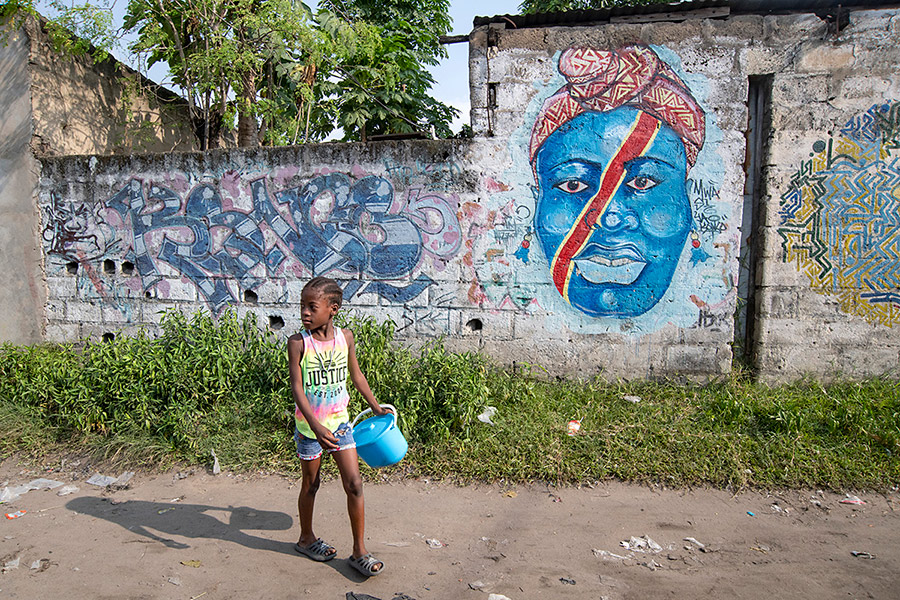
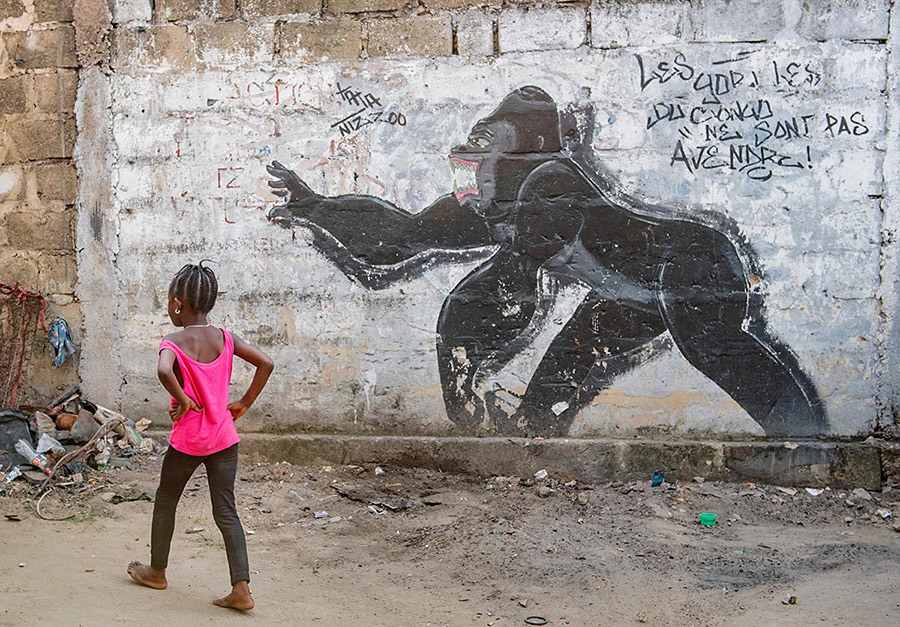
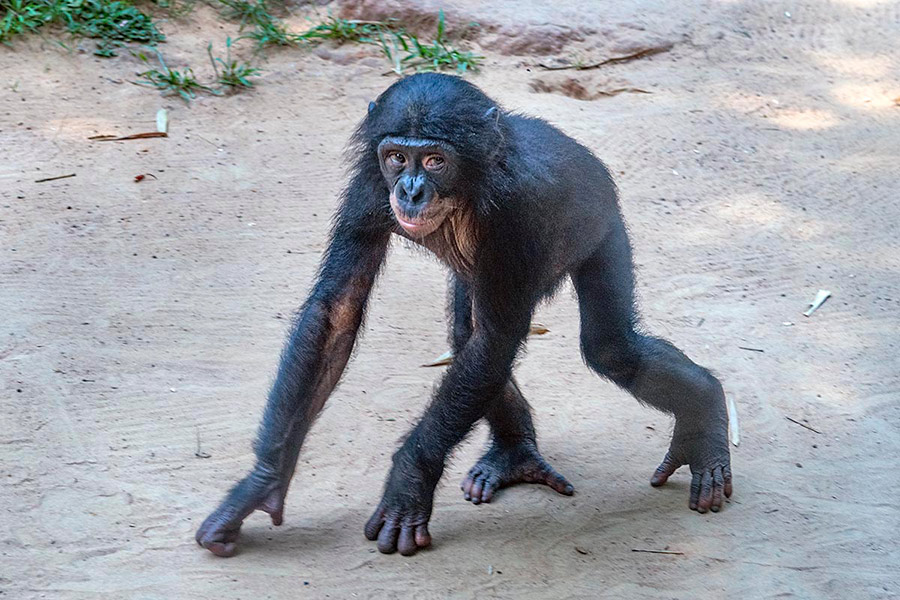
in the world. Kinshasa, Congo. (photo © Martha Cooper)
BONOBOS
Bonobos aren’t directly related to Kin-Graff but Martha says they deserve a mention because they are only found in the Democratic Republic of Congo. “Bonobos share 98.7 percent of DNA with humans making them our closest animal relative,” she says. “Adult bonobos are killed for their meat. Orphaned baby bonobos are adopted, raised and returned to the wild.”
They also show up in street art murals and elsewhere throughout Congolese society and The African Wildlife foundation says they are a critically endangered animal, with only 15,000 to 20,000 remaining. Author Jacqueline Conciatore, writing for the AWF website, also reports that they have non-procreative sex, just like humans. “They live in matriarchal groups and famously use sex as a social tool — to manage conflict and tension or even just say ‘hello.'”
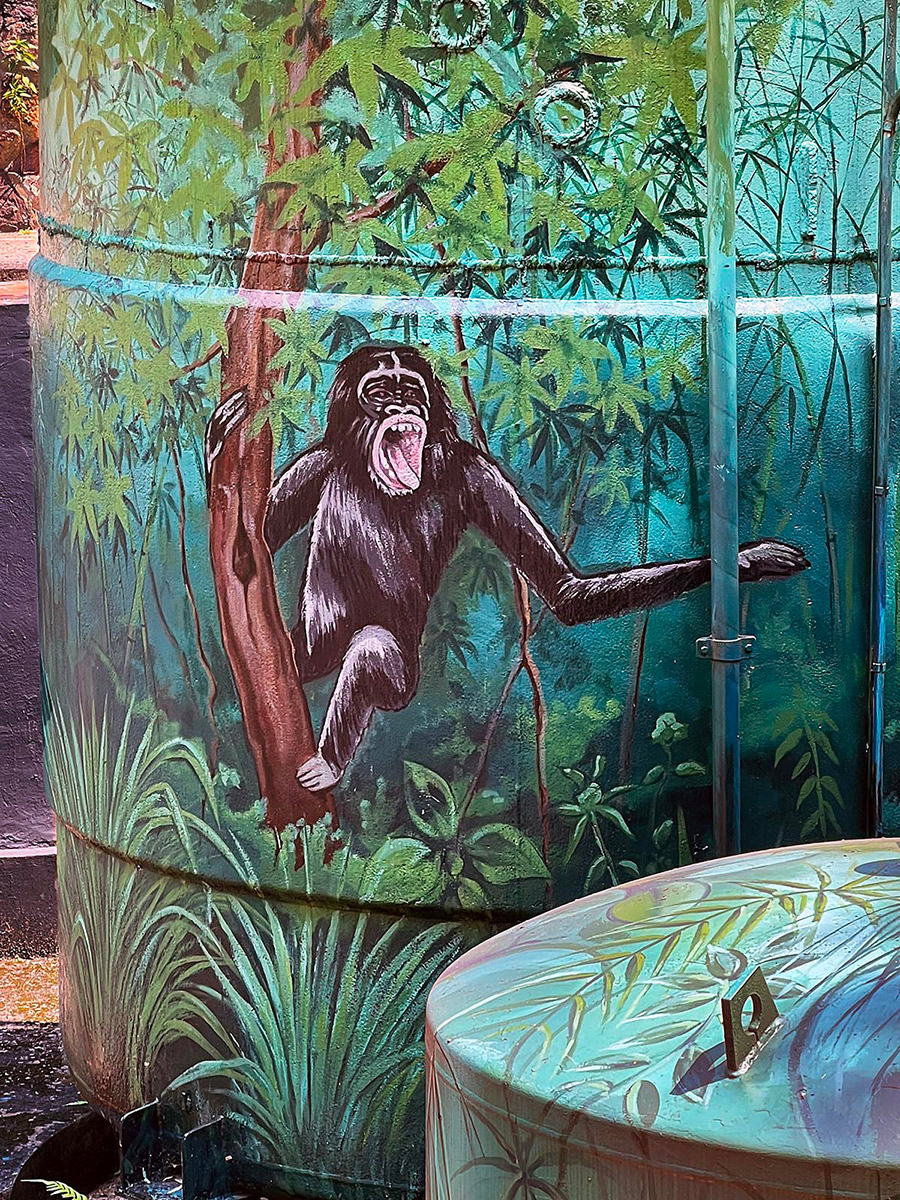
in the world. Kinshasa, Congo. (photo © Martha Cooper)
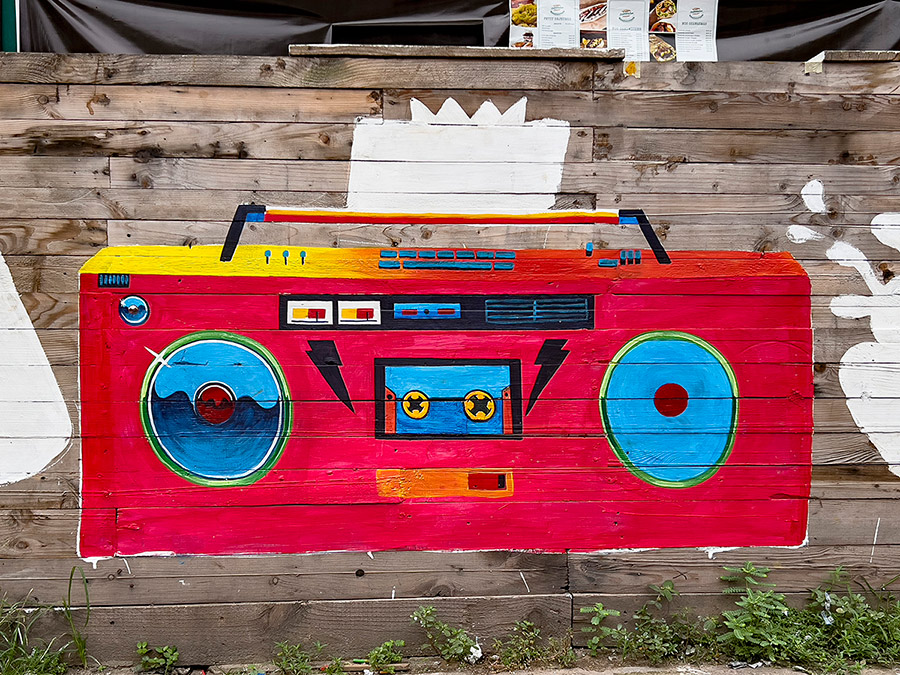
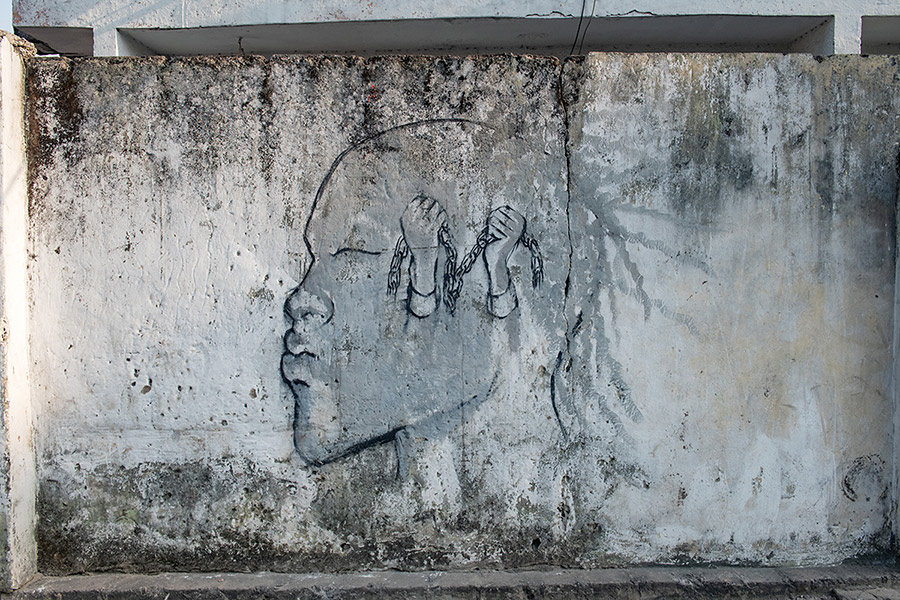
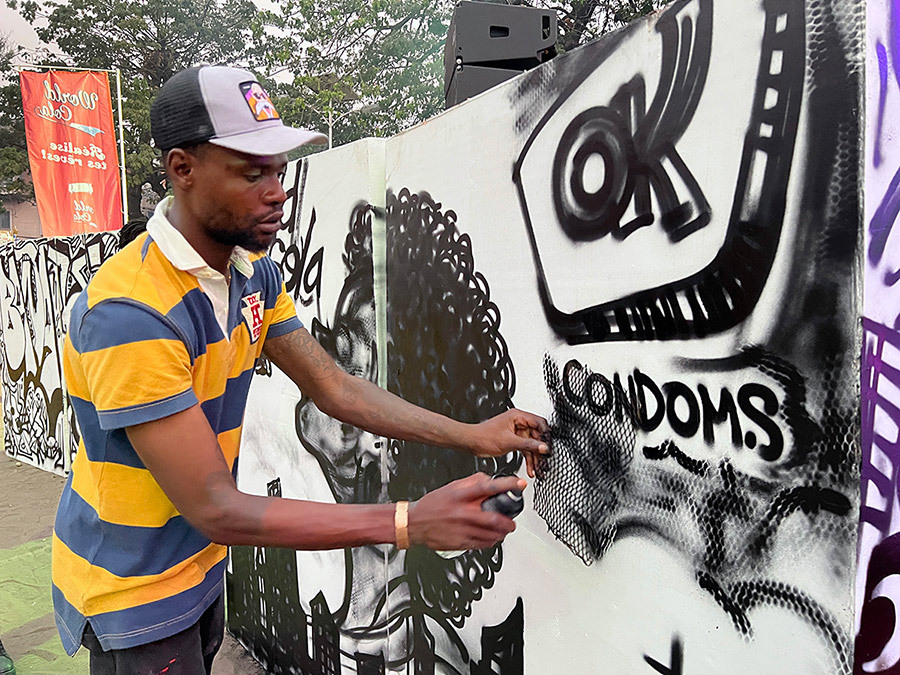
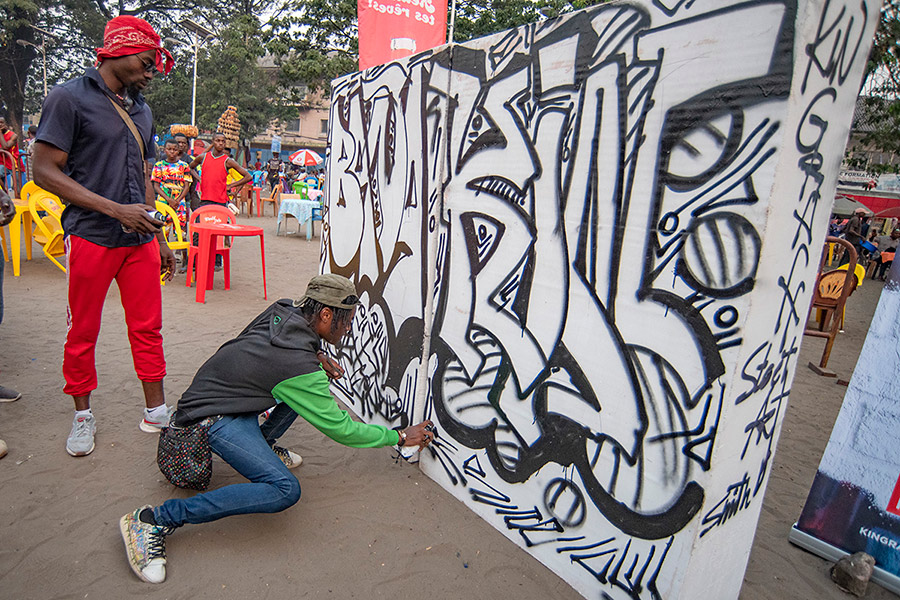
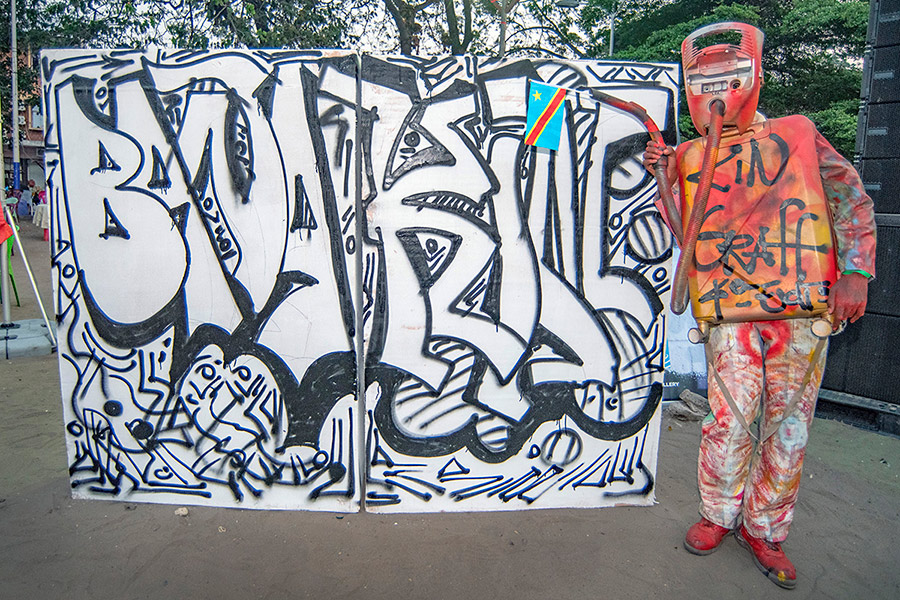
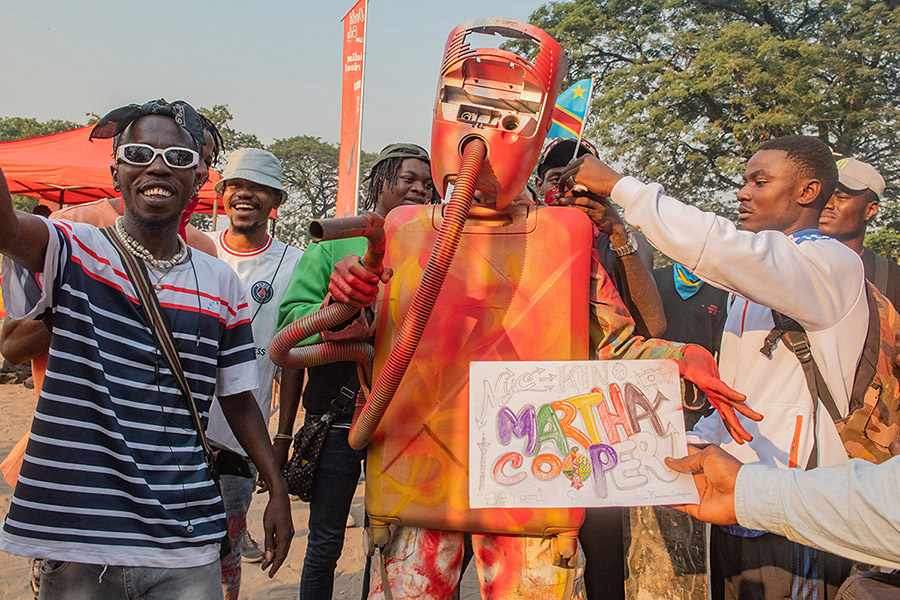
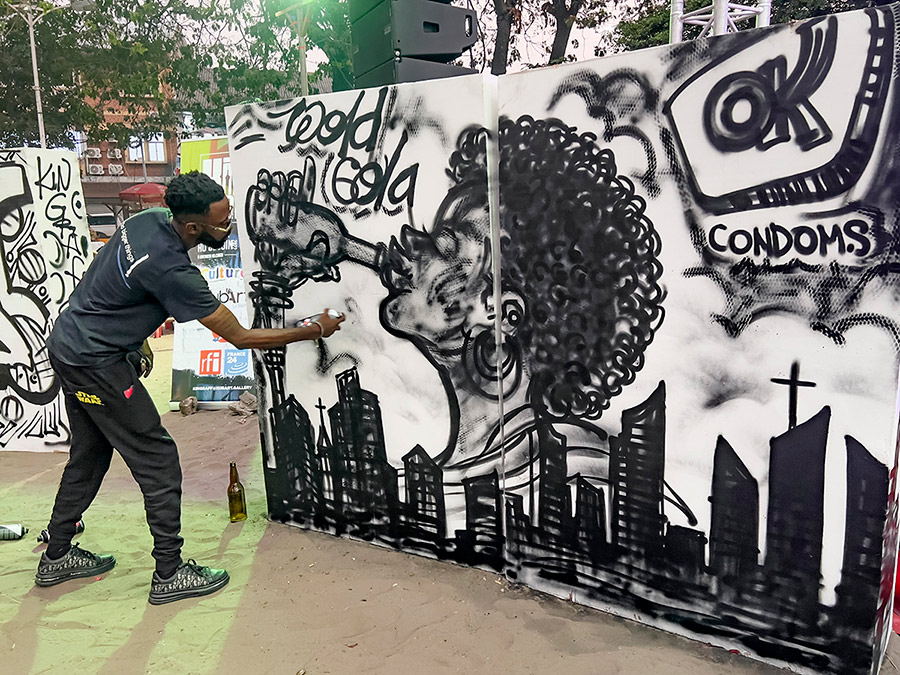
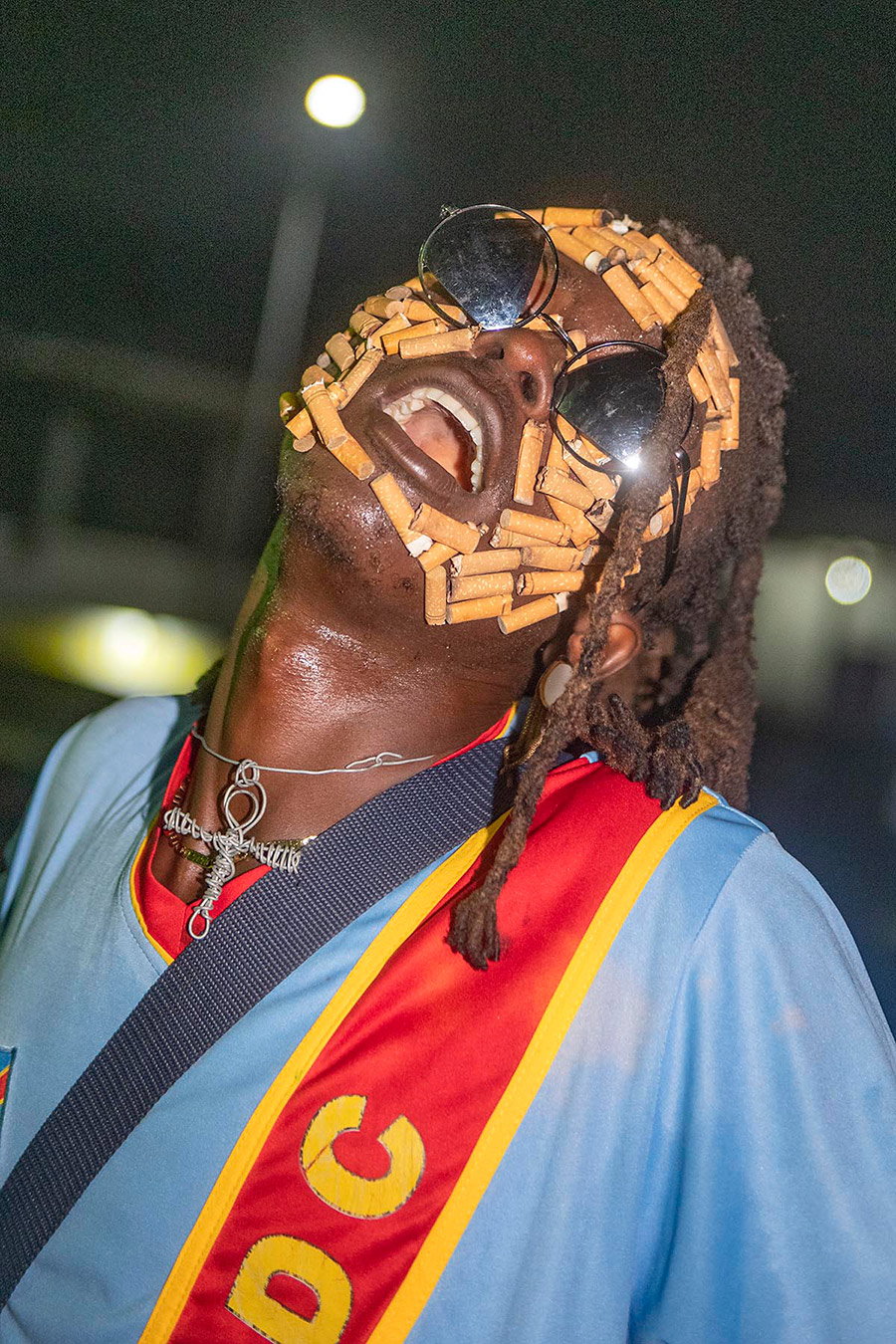
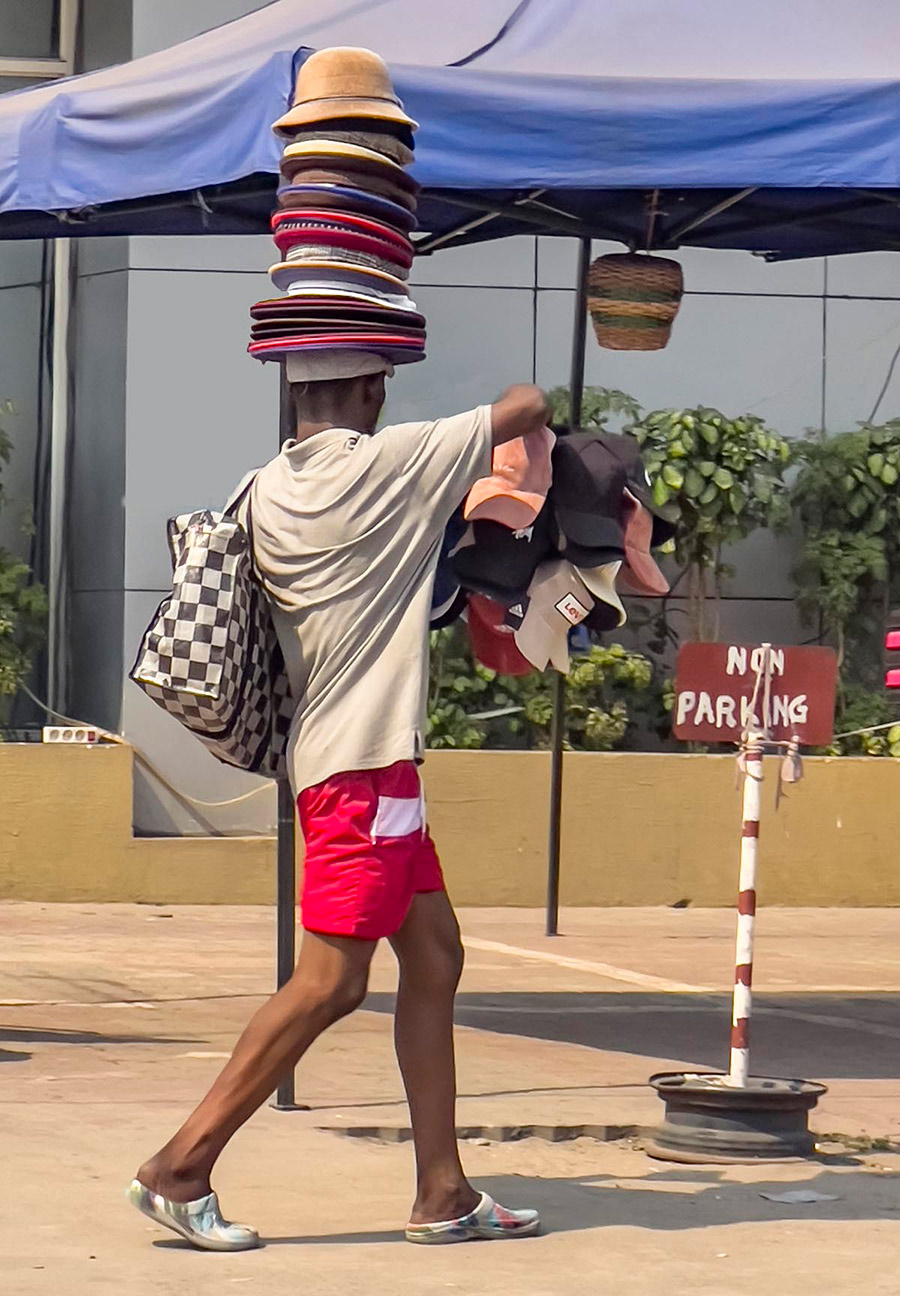
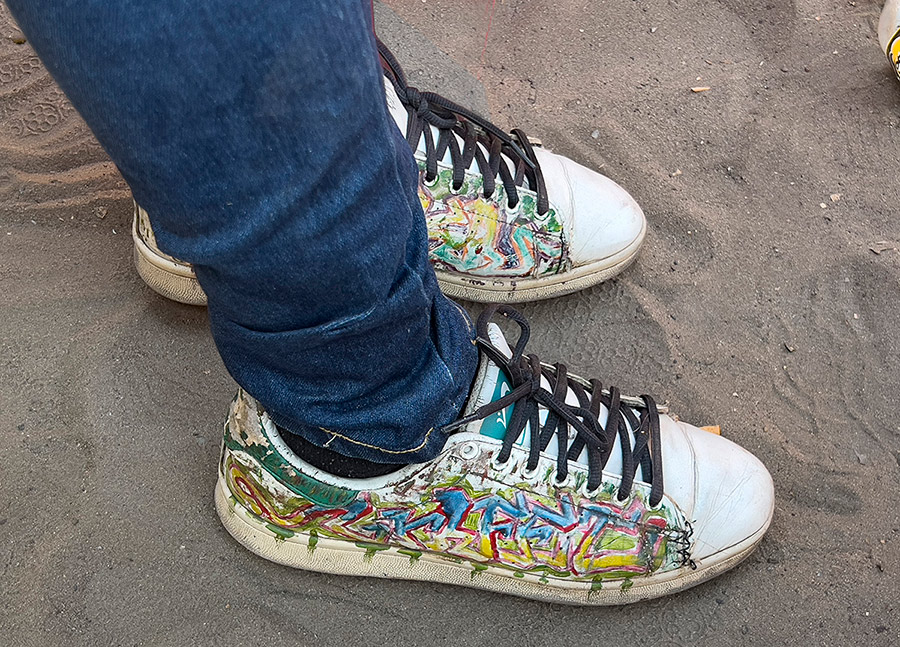
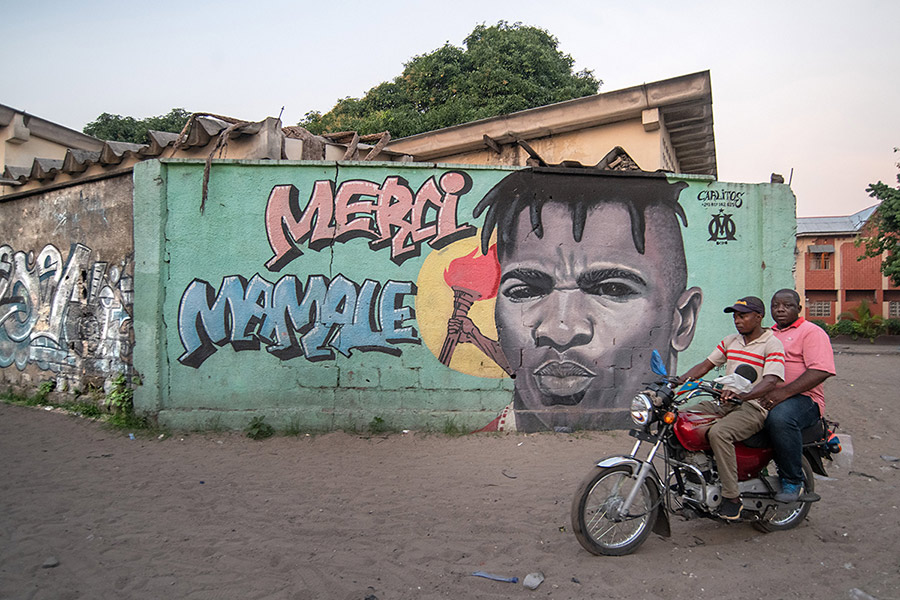
 BROOKLYN STREET ART LOVES YOU MORE EVERY DAY
BROOKLYN STREET ART LOVES YOU MORE EVERY DAY